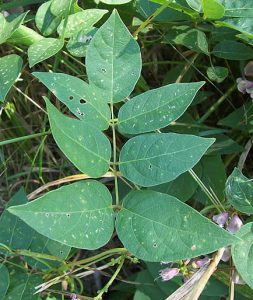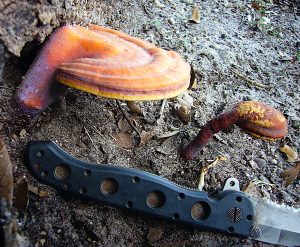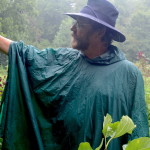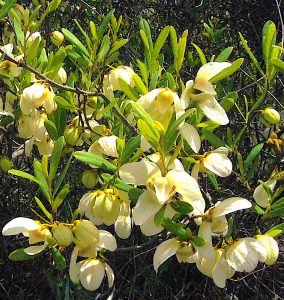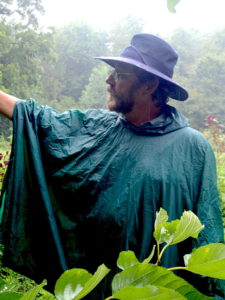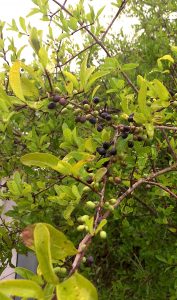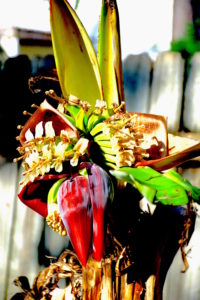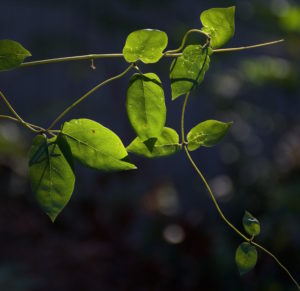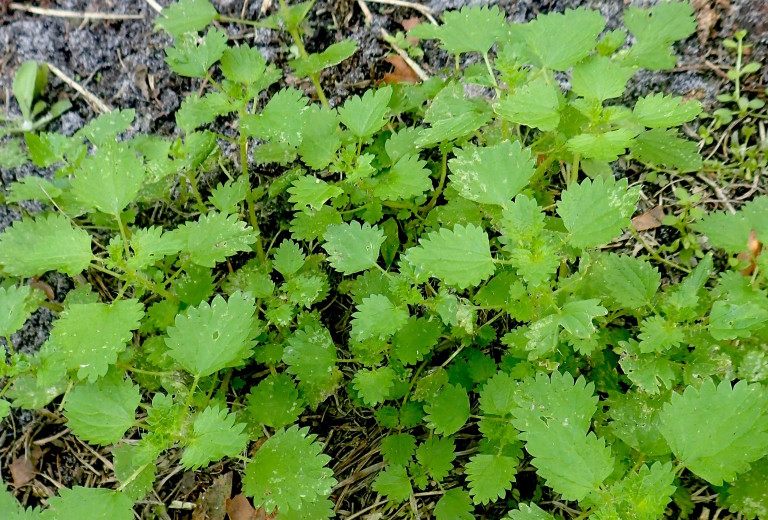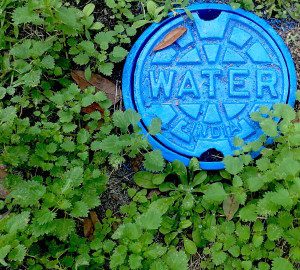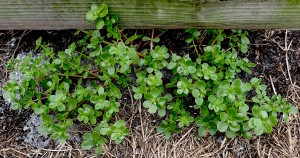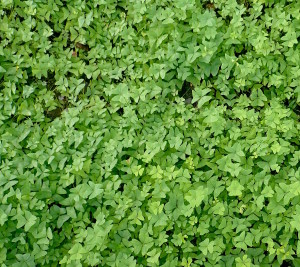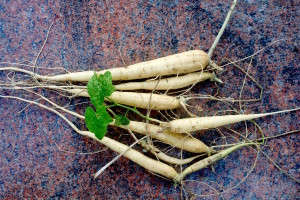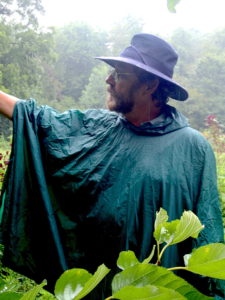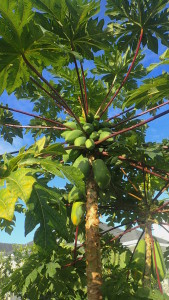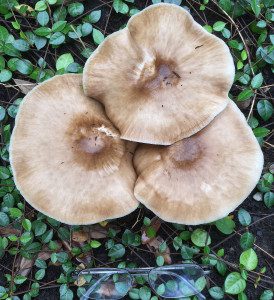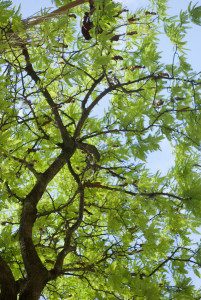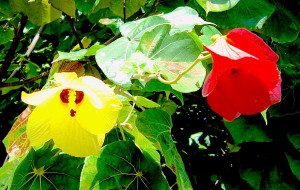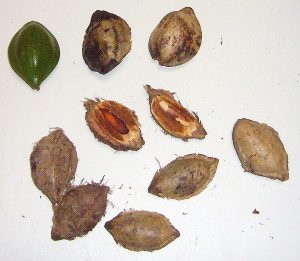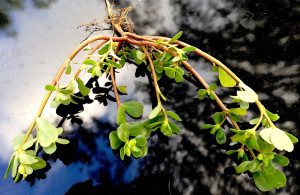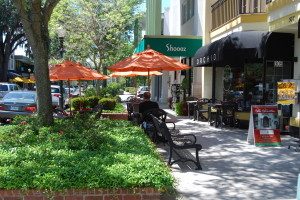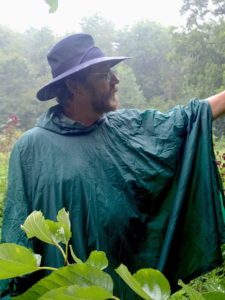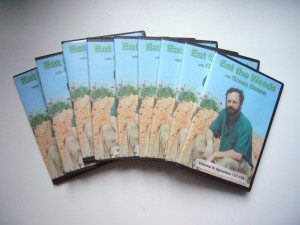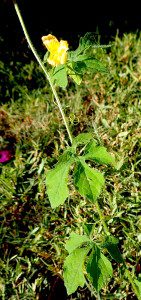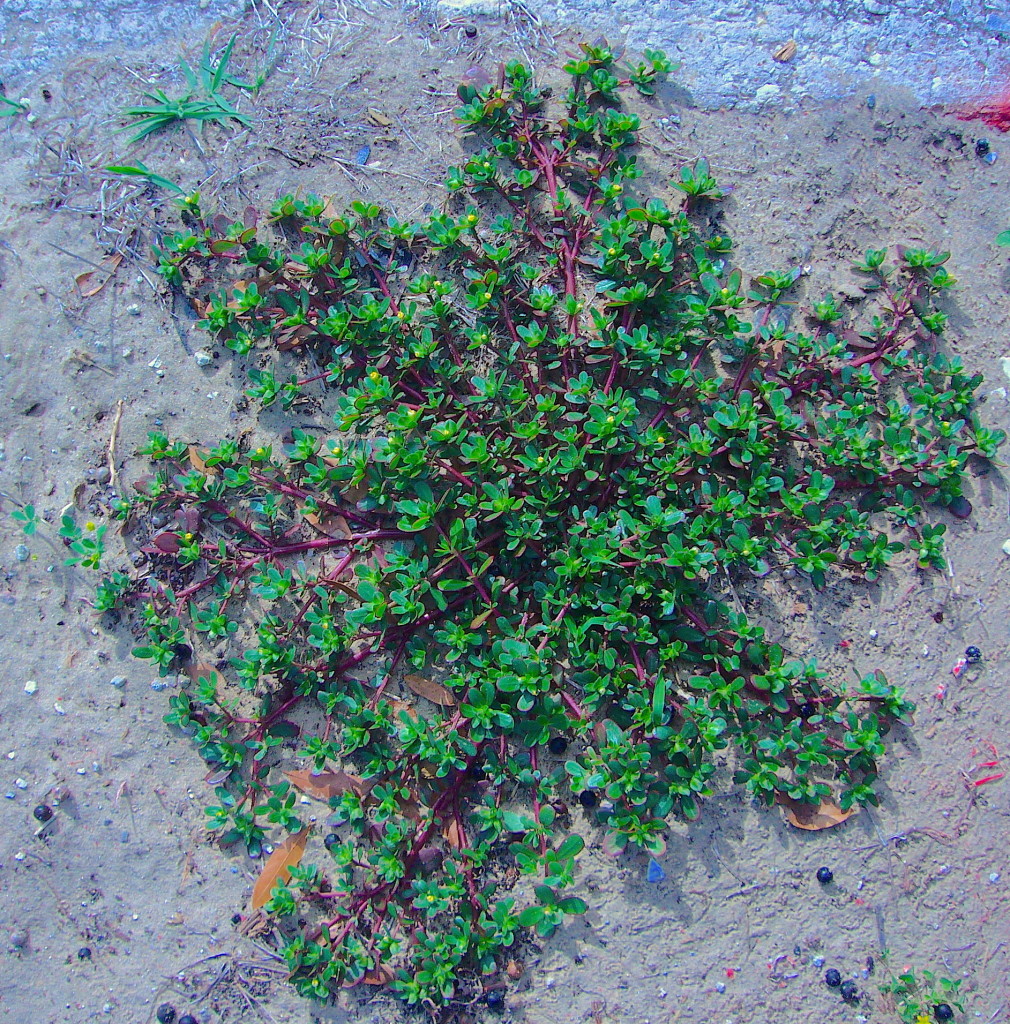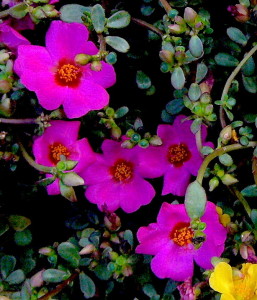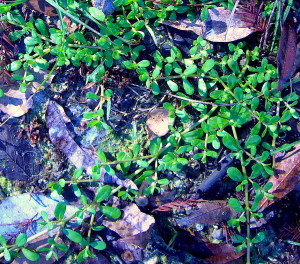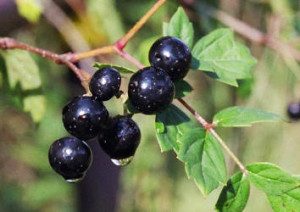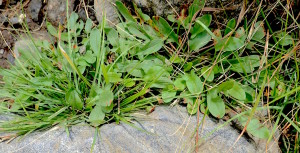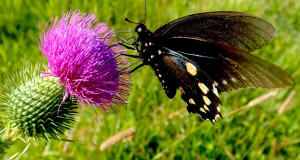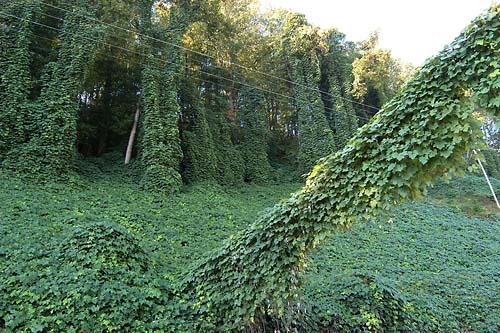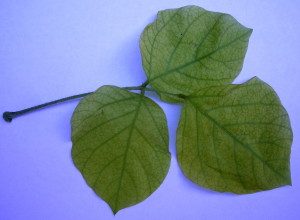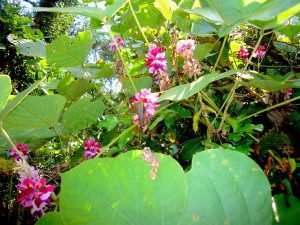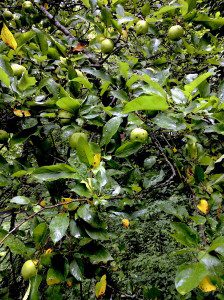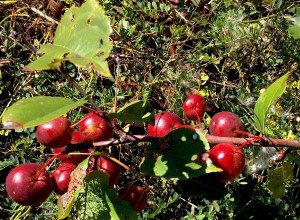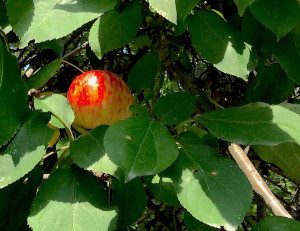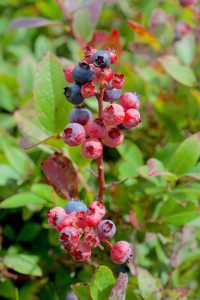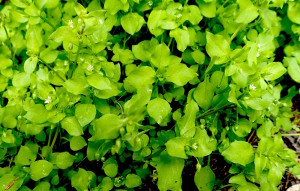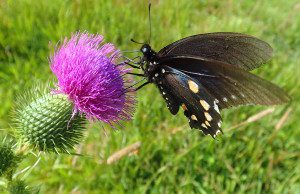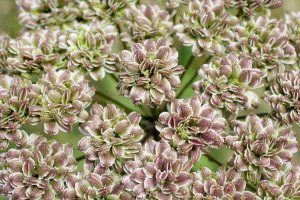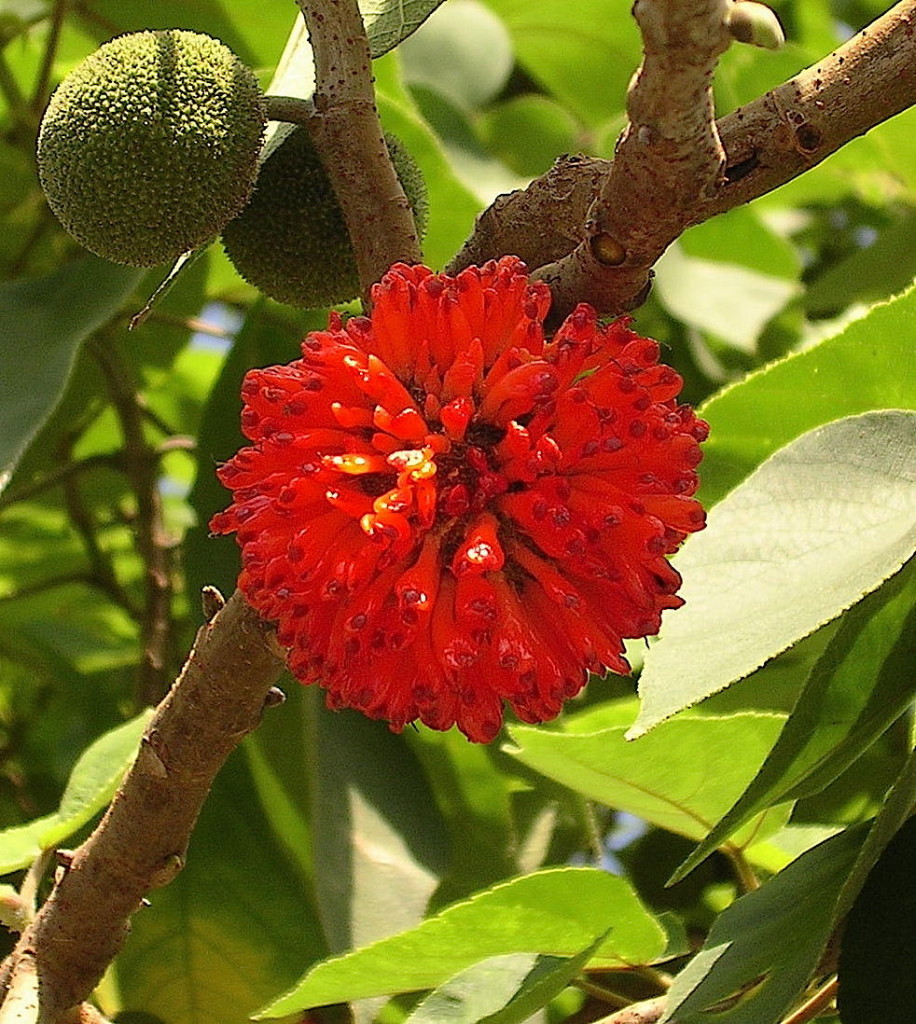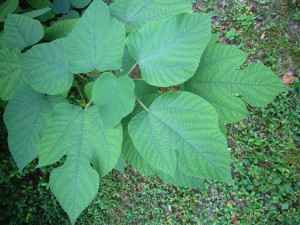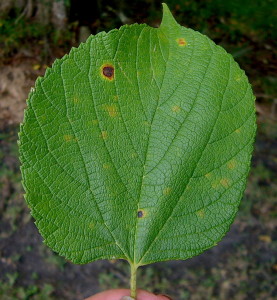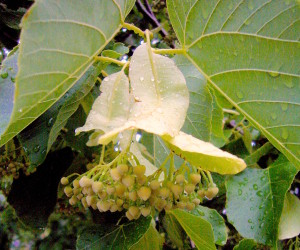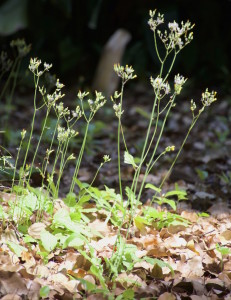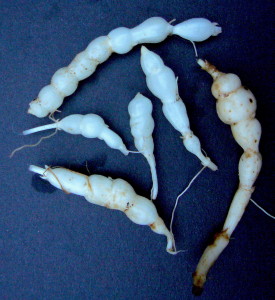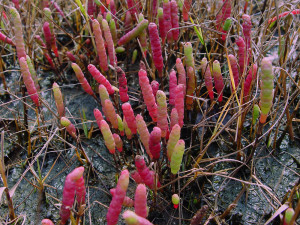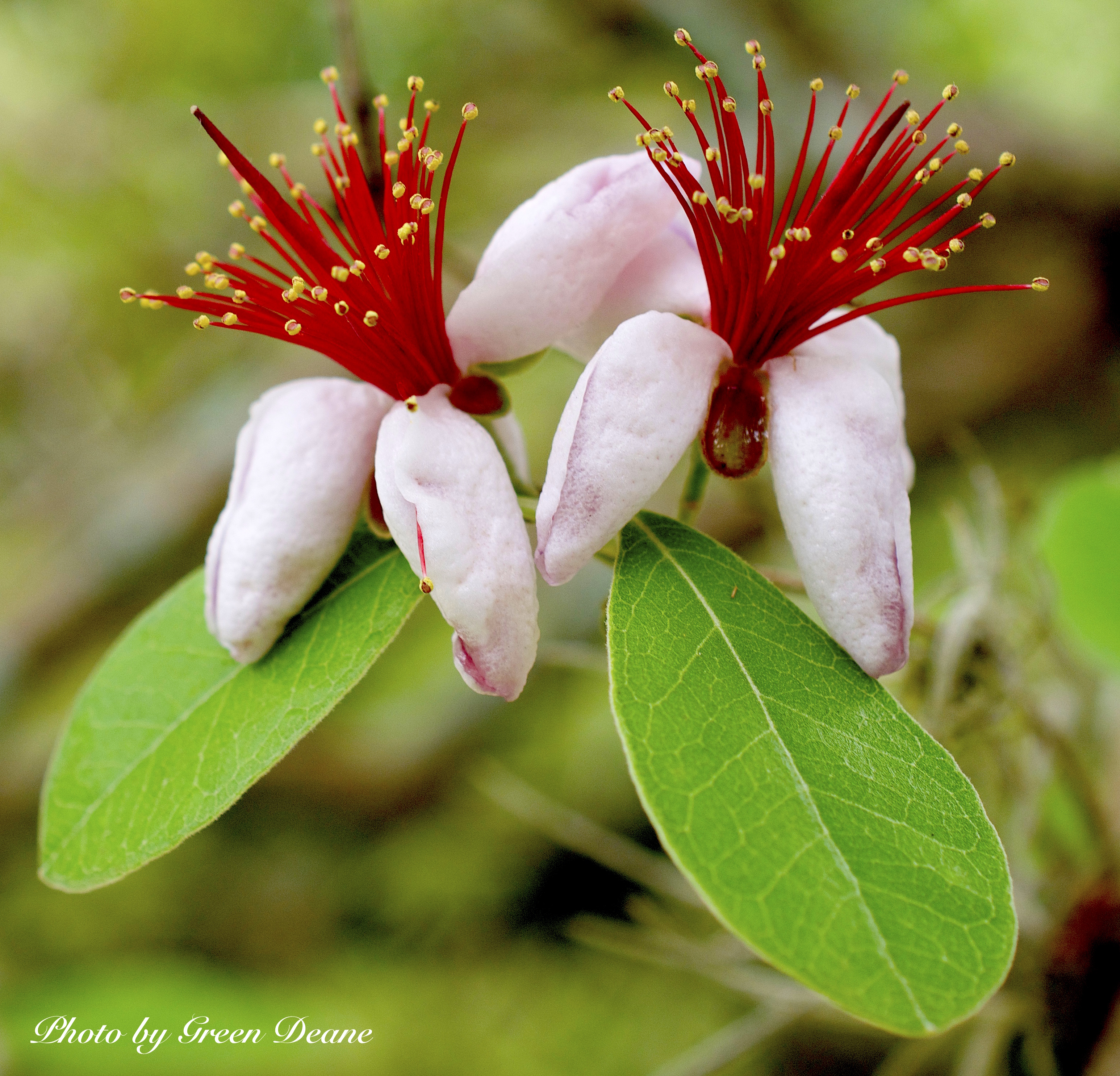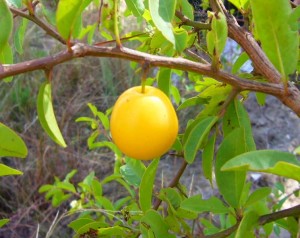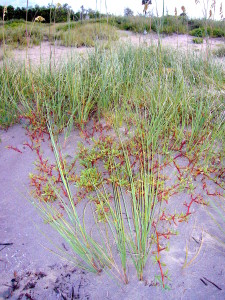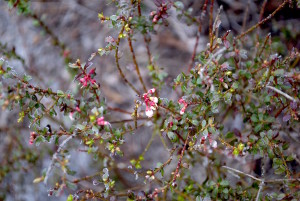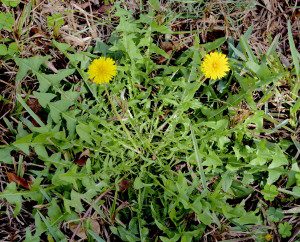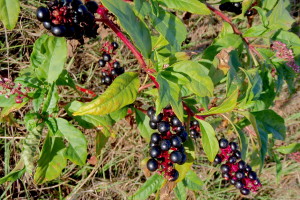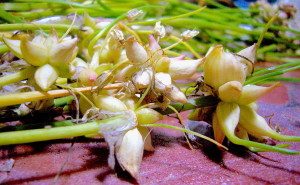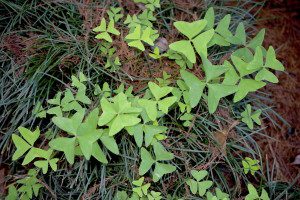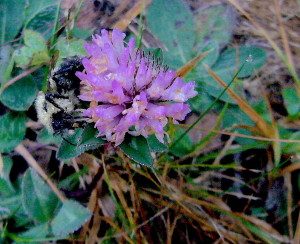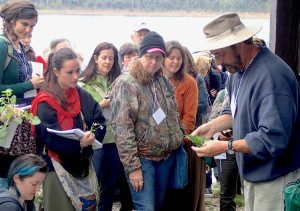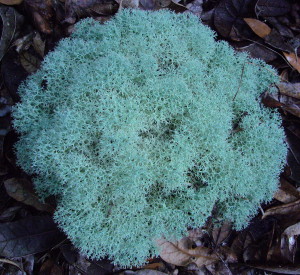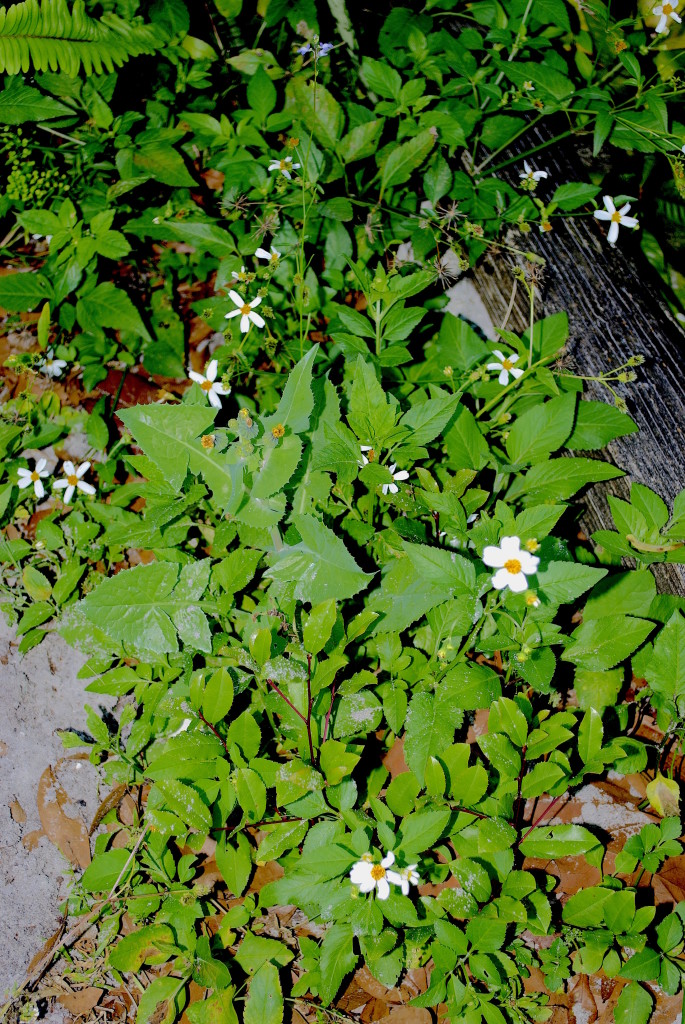- 475
- His name was Will Endres and he was a North Carolina herbalist…Poison ivy, foraging classes, horse mint, ground cherries, foraging USBs, the Green Deane Forum, Southern Wax Myrtle, https://www.eattheweeds.com/newsletter-475-september-21-2021/474
https://www.eattheweeds.com/newsletter-474-september-14-2021/
Chance happens in foraging.
Coralwood, Kudzu, Foraging Classes, Favolus Mushrooms, learning edibles, foraging USB, the Green Deane forum, aroma and cyanide
473
https://www.eattheweeds.com/newsletter-473-september-7th-2021/
It would be convenient if Pindo Palms fruited regularly.
Pindo palms seeds, Canna, Foraging classes, Ghost Pipes, Labor Day, Tallow Plums
472
https://www.eattheweeds.com/newsletter-472-august-31-2021/
Are there any Shiitake mushrooms locally?
Train Wrecker, Chicken of the Woods, Foraging Classes, Dogwood, Hackberries, Kudzu, foraging DVDs and the Green Deane Forum
471
A white Water Hyacinth was seen recently in the Little Econ River east of Orlando.
https://www.eattheweeds.com/newsletter-471-august-24th-2021/
Water hyacinth, Foraging Classes, Wild grapes, Tumble Weed, Goldenrod, Swamp Mallow, Foraging USBs, the Green Deane forum, Donations
470
https://www.eattheweeds.com/newsletter-470-august-17th-2021/
One way northern and southern climates differ is the greater array of non-native species that are constantly being imported and or found in southern climates.
Torell’s Eucalyptus, Chaya, Guavas, Java Plum, Ground Cherries, Coco-plums, Natal Plum, Dragon Fruit, Podocarpus, Persimmons, Foraging USBs, Green Deane Forum, Donations, the Two-Leaf Nightshade
469
Plants remind one that weather is less dependable than we might think.
Jambul, Chanterelles, Cactus Fruit, Sugarberry, Doveweed, Foraging Classes, Isabelline, Foraging USBs, the Green Deane Forum, and Donations
https://www.eattheweeds.com/newsletter-469-august-10-2021/
468
https://www.eattheweeds.com/newsletter-468-august-3-2021/
Yes, there are land crabs in Florida and the rest of the gulf coast.
Land crabs, Foraging classes, Grapes, Podocarpus, Horsemint, Saw Palmetto, Goldenrod, Russian thistle, USBs, Green Deane Forum, donations.
467
Candyroot, Foraging Classes, Wild Grapes, DVDs, Green Deane Forum, Donations, Saw Palmetto, Barnyard Grass, Brookweed
Is it the season or is it the rain?
https://www.eattheweeds.com/newsletter-467-july-27th-2021/
466
This summer’s foraging classes at Putney Farm in Honea Path South Carolina are now history
Foraging in South Carolina, American Beech, Sourwood, Birches, Moringa, foraging Classes, Sumac, Country Wine, Saw Palmetto, foraging USB, Green Deane Forum, and Donations
https://www.eattheweeds.com/newsletter-466-july-20th-2021/
465
Kousa Dogwood, Sassafras, Wild Carrots, Birches Apples
Apples, Mushrooms, Podocarpus, Foraging Classes, Knotweed, Cactus, Peppervine, Foraging DVDs, the Green Deane Forum, donations,
464
In real estate it is location, location, location.
Blue Indigos, Milk Caps, Jelly Fungus, Strawberry Guava, Foraging Classes, Pandamus Grass, Smilax, Foraging DVDs, Green Deane Forum and Donations
https://www.eattheweeds.com/newsletter-464-july-6th-2021/
463
Podocarpus are not fickle but they are slightly unpredictable.
Podocarpus, Java Plum, Stillwater Canoe, Mushrooms, Foraging classes, Atamasco Lily, foraging USBs, the Green Deane Forum, and donations
https://www.eattheweeds.com/newsletter-463-june-29th-2021/
462
If you think you are not allergic to poison Ivy …
https://www.eattheweeds.com/newsletter-462-june-22-2021/
Poison Ivy, Socks and Pythons, Black Cherries, Pokeweed, Yuck, Foraging Classes, Cashews, USBs, the Green Deane Forum, Donations.
461
Sycamores, bacteria, Foraging Classes, Beautyberries, USBs, the Green Deane Forum, Donations, Sweet Acacia
Sugar maples are famous for their syrup but how many species of trees can you actually tap?
https://www.eattheweeds.com/newsletter-461-june-15th-2021/
460
What can be said about the Jambul Tree?
Jambul, Foraging Classes, Maypops, Pindo Palms, Chaya, Foraging USBs, Green Deane Forum, Donations,
https://www.eattheweeds.com/newsletter-460-june-8th-2021/
459
https://www.eattheweeds.com/newsletter-459-june-1st-2021/
For more than 60 years I have associated Lilacs with June.
Lilacs, American Lotus, Foraging Classes, Chinese Tallow Tree, Eastern Hemlock, foraging USBs, the Green Deane Forum, Donations, toxic Atamaso Lilies.
This week’s debatable question is “can you eat elderberries raw?”
Elderberries, Two-leaf Nightshade, Foraging Classes, Morning Glories, foraging USBs, the Green Deane forum, donations, Jack in the Pulpit
https://www.eattheweeds.com/newsletter-458-may-25th-2021/
457
https://www.eattheweeds.com/newsletter-457-may-18th-2021/
Acres of wild blackberries….
Blackberries, foraging is illegal, Sea Blite, Foraging classes, Sea Purslane, foraging videos on USBs, the Green Deane Forum,
456
The Bunya Bunya and Norfolk Pine are closely related.
Bunya Bunya, Norfolk Pine, Allergic reactions, foraging classes, Chickasaw Plums, Blue Mushrooms, cattails, foraging videos on USBs, and the Green Deane Forum,
https://www.eattheweeds.com/newsletter-456-may-4th-2021/
455
https://www.eattheweeds.com/newsletter-455-april-27th-2021/
Is it edible?
Evening Primrose, False dandelions, Yucca, Foraging classes, foraging videos on USBs, the Ghreen Deane Forum,
454
https://www.eattheweeds.com/newsletter-454-april-20-2021/
Pineapple Guava, Hercule’s Club, Usnea, Miner’s Lettuce, Foraging Classes, Paper Mulberry, Where do you forage, Foraging Videos, the Green Deane Forum, Brookweed,
Perhaps no ornamental has been championed as much as the Pineapple Guava
453
https://www.eattheweeds.com/newsletter-453-april-13-2021/
It’s about time to make a prediction.
Ringless Honey Mushrooms, Eastern Coral Bean, Foraging Classes, Watercress, Marlberries, Foraging Videos, Green Deane Forum, Donations,
452
https://www.eattheweeds.com/newsletter-452-april-6th-2021/
On the east coast of my native state of Maine about seven miles south of Portland is the Town of Scarbrough.
Paper Mulberries, Foraging Classes, Deer Mushrooms, Hercules Club, USB Videos, Green Deane Forum, Donations.
451
Which tree has more life, the Mulberry or the Moringa?
Mulberry, Atamasco lily, Foraging Classes, Blueberries, Huckleberries, Watercress, Foraging USBs, the Green Deane Forum, Smilax,
https://www.eattheweeds.com/newsletter-451-march-30th-2021/
450
https://www.eattheweeds.com/newsletter-450-march-23-2021/
wisteria, Cherokee Rose, Deer Mushrooms, Foraging Classes, Hydrilla, Garlic, video USBs, Green Deane Forum, Donations
The weather may be chilly still it’s a hot time of year for foraging.
449
It’s not June that’s busting out all over but rather Vacciniums, mostly blueberries.
Vacciniums, groundnuts, evening primroses, foraging classes, video USBs, Pawpaws, Florida Pennyroyal,
https://www.eattheweeds.com/newsletter-449-march-16-2021/
448
The Greeks were perhaps the first people to call things what they were such as “yoke mate” for spouse or “shiny leather” for the Reishi mushroom.
Bottlebrush tree, Candyroot, Loquats, Mulberries, Foraging classes. USB, the Green Deane Forum
https://www.eattheweeds.com/newsletter-448-march-09-2021/
447
Fireweed, Latex Strangler Vine, Foraging Classes, Clover, Bacopa, Violets, USBs, Cashews
https://www.eattheweeds.com/newsletter-447-02-march-2021/
Fireweed/burnweed has a flavor chefs love.
446
https://www.eattheweeds.com/newsletter-446-feb-23-2021/
Loquats, Loquat wine, Wild Garlic, Foraging Classes, Chickweed, Lamb’s Quarters, Toxic Butterweed, Bulrush, USBs, and the Green Deane Forum,
While driving around have you seen a tree with large, dark green leaves and yellow fruit?
445
https://www.eattheweeds.com/newsletter-445-feb-16-2021/
Can you eat red mangroves?
Mangroves, foraging classes, plantagos, Passion Flowers, Black Medic, USBs&DVDs, Alligator pendent, and the Green Deane Forum
444
https://www.eattheweeds.com/newsletter-444-february-9th-2021/
Young and tender describes them best: Elm leaves we nibbled during our foraging class in Gainesville Saturday.
Elms, Eastern Red Bud, Foraging Classes, Ragweed, Cattails, Coquina, Mole Crabs, USBs & DVDs, the Green Deane Forum, nickerbeans, alligator tooth.
443
https://www.eattheweeds.com/newsletter-443-february-2-2021/
If you look across local lakes now you will see ruby red splotches on the horizon.
Maples, Drymaria, Foraging Classes, Seaweed, USBs & DVDs, the Green Deane Forum, Jabuticaba,
442
https://www.eattheweeds.com/newsletter-442-january-26-2021/
Violets, False Hawk’s Beard, Foraging Classes, Stink Horns, Weed Seeds, USB & DVDs, the Green Deane Forum
A common blossom that’s easy to identify is the wild violet.
441
Our mighty stinging nettles are up.
https://www.eattheweeds.com/newsletter-441-january-19-2021/
Stinging nettles, Sow Thistle, Foraging Classes, Chickweed, Wild Geraniums, Silverthorn, USBs & DVDs, and the Green Deane Forum
440
The Western Tansy Mustard is one of our shortest-lived wintertime forageables.
Western Tansy Mustard, Eastern Gamagrass, Begonias, Foraging Classes, Spiderworts, USBs&DVDs, the Green Deane Forum,
https://www.eattheweeds.com/newsletter-440-january-12th-2021/
439
Our tasty winter green chickweed is in its glory.
https://www.eattheweeds.com/newsletter-439-january-05-2021/
Chickweed, Sheep Sorrel, Oxalis, Latex Strangler Vine, Pellitory, Black Medic, Geranium, Horsemint, Henbit, Shepherd’s Purse, Plantain, Wild Mustard Radish, Canna, Cattails, Foraging Classes, Botany Builder #12, USB & DVDs, and the Green Deane Forum
438
What difference can 172.4 miles make?
https://www.eattheweeds.com/newsletter-438-december-29th-2020/
Goji berry, Sea Rocket, Black Medic, Harlequin Glorybower, Foraging Classes, Nagi Tree, Glasswort, USBs & DVDs, the Green Deane Forum
437
At what point does a “wild” plant become an edible plant?
https://www.eattheweeds.com/newsletter-437-december-22-2020/
Florida Thatch Palm, Sleepy Hibiscus, Cereus, Bauhinia, Foraging Classes, Cockroach Berry, Silverthorn, USBs and DVDs, the Green Deane Forum
436
https://www.eattheweeds.com/newsletter-436-december-15th-2020/
Usually we see Christmas Berries about April.
Christmas Berries. Foraging Classes, Sow Thistle, Mustards & Radishes, Black Calabash, USBs & DVDs, and the Green Deane Forum
435
Our first sighting of one of our winter comestibles happened Saturday
Chickweed, Ringless Honey Mushrooms, Foraging Classes, Henbit, Wild Geraniums, Peltate, Is this Plant Edible? foraging USB & DVDs, the Green Deane Forum,
https://www.eattheweeds.com/newsletter-435-december-08-2020/
434
https://www.eattheweeds.com/newsletter-434-december-01-2020/
Winter Podocarpus, Acerola, Foraging Classes, Chufa, Redflower Ragweed, Weeds of Southern Turf Grasses, foraging USBs &DVDs, the Green Deane Forum.
Actually there’s nothing wrong with the photo per se, it’s the time of year that’s different.
433
https://www.eattheweeds.com/newsletter-433-november-24-2020/
Every April of so we go looking for Wild Garlic…
Wild Garlic, Big Caltrop, Foraging Classes, Ghost Pipes, Balm of Gilead, USBs & DVDs, Green Deane Forum
432
We are shifting mushrooms seasons from terrestrial to trees or ground to wood.
Lion’s Mane, Gooseberries, Foraging classes, Sea Purslane, Foraging in urban areas, USB and DVDs, the Green Deane forum
https://www.eattheweeds.com/newsletter-432-november-17th-2020/
431
https://www.eattheweeds.com/newsletter-431-november-10-2020/
While looking for the yellow-blossomed Dandelions…
Dandelions, Mustard and radishes, Plantains, Foraging Classes, Brazilian Pepper,Skunk Vine, USBs & DVDs, the Green Deane Forum
430
https://www.eattheweeds.com/newsletter-430-november-3-2020/
During our foraging class in West Palm Beach Sunday we saw inch-high sprouts of the winter edible Pellitory.
Pellitory, Poor Man’s Peppergrass, Foraging classes, Seaweed, Jelly Fish, Southern Wax Myrtle, Stinkhorns, Jack Ol Lanterns, USBs & DVDs, the Green Deane Forum.
429
https://www.eattheweeds.com/newsletter-429-october-27-2020/
During our foraging class Sunday in Gainesville we dug up a couple of Winged Yams.
Winged Yams. Tropical Almond, Foraging Classes, Roses, Bay Leaves, Citron Melon, the Honeycomb Mushroom, USBs and DVDs, the Green Deane Forum.
428
https://www.eattheweeds.com/newsletter-428-october-20-2020/
Country Wine, Foraging Classes, Chinese Tallow Tree, Caesarweed, Cambium, USBs and DVDs, the Green Deane Forum, and Ceibas
Three reasons prompted me to resurrect my wine-making past.
427
Mother Nature has her own schedule.
Ringless Honey Mushrooms, Golden Rain Tree, Foraging Classes, Dragon Fruit, Partridgeberry, DVDs & USB, the Green Deane Forum
https://www.eattheweeds.com/newsletter-427-october-13-2020/
426
Fall is a good time to write about Yellow Pond Lilys.
Yellow Pond Lilys, Persimmons, Monstera deliciosa, Turkey Tails, Foraging Classes, Sida, sumacs, two sages and a pusley, USBs and DVDs, and the Green Deane Forum
https://www.eattheweeds.com/newsletter-426-october-6-2020/
425
https://www.eattheweeds.com/newsletter-425-september-29th-2020/
The question isn’t whether Reishi mushrooms grow in North America.
Reishi mushrooms, Wax Myrtle Berries, Foraging Classes, American Beautyberries, Sea and Wood Oats, Ground Cherries, Anoles, Chestnut Bolete, DVDs and USB, the Green Deane Forum.
424
Horsemint is in season and easy to find.
Horsemint, Crowfoot Grass, Foraging Classes, Apples, the aroma of wild food, plant pronunciations, foraging DVDs and USB, the Green Deane Forum,
423
https://www.eattheweeds.com/newsletter-423-september-15th-2020/
No one told the Ringless Honey Mushrooms it isn’t November.
Ringless Honey Mushrooms, the Syzygiums, Foraging Classes, Heartwing Sorrel, Bacopa, Groundnuts, USB and DVDs, and the Green Deane Forum
422
https://www.eattheweeds.com/newsletter-422-september-8th-2020/
Pindo and Queen Palms, Canna, Indian Pipes, Foraging Classes, Scrumping, USBs and DVDs, the Green Deane Forum.
421
In the backwoods of Maine where I grew up Dogwoods were small.
Perennial Peanut, Kousa Dogwood, Sugarberry/Hackberry, Foraging Classes, Ground Cherries, foraging DVDsUSBs, the Green Deane Forum.
https://www.eattheweeds.com/newsletter-421-september-01-2020/
420
Gracie gets the prize.
Black Trumpets, Persimmons, foraging classes, Kudzu, Wild Apples, the toxic False Parasol, foraging USBs and DVDs, and the Green Deane forum.
https://www.eattheweeds.com/newsletter-420-august-25th-2020/
419
Last Sunday’s foraging class — Haulover Canal — was a hot one with a lot of walking.
Tallow Plums, Foraging Classes, Goldenrod, Saw Palmettos, White Spiderling, Sumac, foraging DVDS & USBs,
https://www.eattheweeds.com/newsletter-419-august-18th-2020/
418
https://www.eattheweeds.com/newsletter-418-august-11-2020/
There is probably some Syzygium in your kitchen.
Bunya Bunyas, Syzygiums, Chanterelles, Cactus Tuna, Sugarberry, Doveweed, Isabelline, foraging DVDs and USB, the Green Deane Forum…
417
https://www.eattheweeds.com/newsletter-417-august-04-2020/
Wild mints can be prima donnas.
Horsemint, Russian Thistle, Foraging Classes, Goldenrod, Swamp Mallow, foraging videos, Green Deane Forum, Pindo Palms
416
With apologies this newsletter is starting with the foraging class schedule.
Wild Grapes, foraging class schedule, Pepper Vine, Podocarpus, Country Wine Update, Sumacs, Saw Palmettos, Foraging Videos, Green Deane Forum, Black Gum
https://www.eattheweeds.com/newsletter-416-july-29th-2020/
415
July is passing and that means many different things to foragers depending upon your location on the rotation.
Forked-tendril grapes, pindo palms, cactus, foraging classes, the false roselle, barnyard grass, strawberry guava, foraging DVDs & USB, the green Deane Forum,
https://www.eattheweeds.com/newsletter-415-july-21-2020/
414
It’s called Pandanus and Screw Pine and a lot of other names as well.
Pandanus Grass, Smilax walteri, Foraging Classes, Knotweed, Pineapple Weed, Tamarind, Toe Biters, foraging videos on USB, and the Green Deane Forum
https://www.eattheweeds.com/newsletter-414-july-14th-2020/
413
Is it time to rethink Magnolias?
Magnolias, Foraging Classes, Podocarpus, Florida Wine, Bread and Beer, Foraging Videos on USB, Green Deane Forum, Strawberry Guavas
https://www.eattheweeds.com/newsletter-413-july-7-2020/
412
First an apology to those who showed up for a class last Sunday at Haul Over Canal to find, like me, the road closed.
Chamberbitters, foraging classes, Grapes, Magnolias, videos on USB, Green Deane Forum, and Bacopa
https://www.eattheweeds.com/newsletter-412-june-30th-2020/
411
What can be said about the Jambul Tree?
Jambul Tree, Foraging Classes, Morning Glories, Boletes, Poke Sallet, Tindora, Foraging Videos on USBs, and the Green Deane Forum
https://www.eattheweeds.com/newsletter-411-june-23-2020/
410
https://www.eattheweeds.com/newsletter-410-june-16th-2020/
Sugar maples are famous for their syrup but how many species of trees can you actually tap?
Tapping trees, grapes, foraging classes, American Beautyberries, Creeping Fig, Richardia, videos on USBs and the Green Deane Forum
409
https://www.eattheweeds.com/newsletter-409-june-9-2020/
There’s an old song “what a difference a day makes.”
Mushroom class, foraging classes, Natal Plum, Surinam Cherries, Foraging videos on USBs, the Green Deane Forum.
408
https://www.eattheweeds.com/newsletter-408-june-2-2020/
Yellow ponds, that’s how I think of it, or in some places, yellow rivers.
American Lotus, Jack in the Pulpit, Black Cherries, a toxic lily, Chinese Tallow Tree, Foraging Classes, Maypops, Videos on USBs, and the Green Deane Forum.
407
In the realm of plant populations there is endangered, threatened then rare.
Candyroot, American Lotus, Foraging Classes, Eggs, USBs and the Green Deane Forum
https://www.eattheweeds.com/newsletter-407-may-26-2020/
406
This was a “Prunus” foraging week.
Chickasaw Plums, Indigo Milk Cap, Black Medic, Foraging Classes, Cattails, Foraging Videos, Podocarpus, Wine Making, Blue Porter Weed, Green Deane Forum, Wild Pineapple.
https://www.eattheweeds.com/newsletter-406-may-19-2020/
405
We are in between mushroom seasons, so to speak.
Boletes, Society Garlic, Gopher Apples, Foraging Classes, Foraging DVDs/USBs, Botany Builder #28, Maypops, Toxic Cherry Laurel, Cochineal Dye, and the Green Deane Forum.
https://www.eattheweeds.com/newsletter-12-may-2020/
404
This week’s debatable question is “can you eat elderberries raw?”
Elderberries, Grapes, Common Plant Names, Redflower Ragweed, Fakahatchee Grass, Ground Nuts, Foraging Classes, Foraging videos, Wild Coffee and Coralberry, the Green Deane Forum.
https://www.eattheweeds.com/newsletter-05-may-2020/
403
Now is a good time to go looking for blackberries.
Blackberries, Pineapple Guava, the Bacopas, Foraging Classes, Foraging Videos now on USB drives, Eastern Coral Bean, Coquina, Green Deane Forum, and Cotton
https://www.eattheweeds.com/newsletter-28-april-2020/
401-402
At one time there were just Opuntias.
Cactus, Gopher Apples, Deerberries, Foraging Classes, Mushrooms, Foraging DVDs, Persimmons, Avocados, Paper Mulberry, Pawpaw, Smartweed, Green Deane Forum and YUCK!,
https://www.eattheweeds.com/newsletter-april-14-21-2020/
400
Watercress grew in a ditch behind an apartment complex I lived in near Sanford, Florida…
Watercress, Wild Garlic, Marlberries, Chokeberries, American Nightshade, Chamberbitter, Green Deane Forum, Donations, DVDs
https://www.eattheweeds.com/newsletter-7-april-2020/
399
Blossoming this time of year is the Eastern Coral Bean, sometimes called the Cherokee Bean.
Eastern Coral Bean, Sea Blite, Foraging Classes, Pineapple Guava, Foraging DVDs, Variegated Mahoe, Australian Pine, Bananas, Green Deane Forum, Donations, Making Wine
https://www.eattheweeds.com/newsletter-31-march-2020/
398
If you have an established ivy gourd…
Ivy Gourd, Swinecress, Foraging Classes, Cashews, Henbit, Purslane, DVDs, Green Deane Forum, Donations, Basswood,
https://www.eattheweeds.com/newsletter-24-march-2020/
397
A common blossom that’s easy to identify is the wild violet.
Violets, Seablite, Loquats, foraging classes, Redflower Ragweed, Latex Strangler Vine, Green Deane Forum, Donations, DVDs, Ivy Gourd
https://www.eattheweeds.com/newsletter-17-march-2020/
396
Fireweed/Burnweed has a flavor chefs love.
Fireweed/Burnweed, Clover, Foraging Classes, Waning Weeds, Fungi, Creeping Cucumber, Bacopa, Pennyroyal, DVDs, Green Deane Forum, Donations
https://www.eattheweeds.com/newsletter-10-march-2020/
395
A few newsletters ago it was mentioned the Mulberries were in blossom.
Mulberries, foraging classes, Pawpaws, Time Change, Dandelions and False Dandelions, Winter Plants and Wintergreen, Green Deane Forum, DVDs, Donating, and foraging photo #19
https://www.eattheweeds.com/newsletter-3-march-2020/
394
Species in the Rumex genus can be difficult.
Rumex, Foraging Classes, Citron Melons, Loquat, Clover, Green Deane Forum, Foraging DVDS, Donations,
https://www.eattheweeds.com/newsletter-25-february-2020/
393
What are those white blossoms?
Plums, Hawthorns, Pawpaw, Foraging Classes, Blewit, Wild Garlic, Plantagos, Green Deane Forum, DVDs, Donations, Botany Builder #38.
https://www.eattheweeds.com/newsletter-18-february-2020/
392
It’s time for my annual warning about Butterweed
Butterweed, Bulrush, Foraging Classes, Wild Pineapple, Red Powder Puff, DVDs, Creeping Indigo warning, Green Deane forum, donations,
https://www.eattheweeds.com/newsletter-11-february-2020/
391
Most trees in the Pea Family are toxic but not all of them.
Eastern redbud, Cattails, Pines, Foraging Classes, Coquina and Mole Crabs, Acorns, Plantagos, DVDs, the Green Deane Forum
https://www.eattheweeds.com/newsletter-04-february-2020/
390
While driving through the middle of the peninsula this week I noticed Lambsquarters in their most common seasonal place: Citrus groves.
Lambsquarters, Foraging Classes, Passifloras, Doveweed, Axils, Jelly Fish, DVDs, the Green Deane Forum, Donations
https://www.eattheweeds.com/newsletter-28-january-2020/
389
https://www.eattheweeds.com/newsletter-21-january-2020/
Cladonia is a large genus of edible but not tasty lichen.
Lichen, foraging classes, Botany Builder 28, Wild Lettuce, Removing Invasive Species, Botanical Names, Black Medic, Foraging DVDs, the Green Deane Forum, Donations
388
It’s rather obvious that wintertime foraging varies where you live.
Winter Foraging, Chickweed and edible friends, Foraging classes, Sublimed sulfur, A cheap foraging book, Details and Solanum Americanum, Oyster Mushrooms, DVDs, Donations and the Green Deane Forum.
https://www.eattheweeds.com/newsletter-14-january-2020/
387
Eastern Gamagrass, aka Fakahatchee Grass, is an edible you don’t see and then you do.
Eastern Gamagrass, Ivy Gourd, Foraging Classes, Teas, Botany Builder #10, Carpetweed, Donations, Foraging DVDs, the Green Deane Forum
https://www.eattheweeds.com/newsletter-7-january-2020/
386
There’s no reason to buy mustard greens now.
Wild mustard and radish, Butter and Ruby Boletes, Foraging Classes, Edible Blossoms, Surinam Cherries, toxic Creeping Indigo.
https://www.eattheweeds.com/newsletter-31-december-2019/
385
It’s a good time to mention the toxic Butterweed and Rattlebox.
Butterweed, Foraging Classes, Roses, Hawthorns, Euell Gibbons and Nutrition, Rattlebox
https://www.eattheweeds.com/newsletter-24-december-2019/
384
Plants give you something to look forward to especially if you know where and when to look.
https://www.eattheweeds.com/newsletter-17-december-2019/
Wild Garlic, Chickweed, Goosegrass, Sow Thistle, Stinging Nettles, Dandelions, Sycamore, Foraging Classes, Tar Vine, Desert Horse Purslane, Green Deane Forum, DVDs, Go Fund Me, Urban Crawl
383
Mother Nature can be fickle and it’s almost always tied to weather.
Grapes, Swinecress, Silverthorn, Foraging Classes, False Hawk’s Beard, Jelly Ears, Botany Builder #31, Cactus, the Green Deane Forum, Foraging DVDs, Go Fund Me
https://www.eattheweeds.com/newsletter-10-december-2019/
382
Pyracanthas are furious in the fall.
Pyrachanthas Chinese and Siberian Elms, Silverthorn, Foraging Classes, Drymaria, Botany Builder #30, Magnolia Blossoms, Ginkgo, Foraging DVDs, the Green Deane Forum, Go Fund Me, Pollination in a word, and Remembering Nefertiti
https://www.eattheweeds.com/newsletter-3-december-2019/
381
This time of year two wintertime foragables come up, one quite esteemed the other barely edible.
Henbit, Wild Geraniums, Foraging Classes, Chickweed, Horse Nettle & Tropical Soda Apple, Bananas
https://www.eattheweeds.com/newsletter-26-november-2019/
380
wild Mustards and radishes, Toxic Water Hemlock, Smartweed, Foraging Classes, Golden Rain Tree, Skunk Vine, Scat Contamination, Lady Bugs, and Lion’s Mane
Many foraging books are what I call “Ohio-centric.”
https://www.eattheweeds.com/newsletter-19-november-2019/
379
Dandelions, Seaweed, Foraging classes, Jellyfish, Wax Myrtle Berries, the Stinkhorn and Jack O’Lanterns, Mustards and Radishes, the Green Deane Forum, Donations, and foraging DVDs
Dandelion blossoms, ten pounds of sugar, and two cakes of bread yeast became my first batch of wine.
https://www.eattheweeds.com/newsletter-05-november-2019/
378
Edible Mushrooms, Foraging Classes, Tie Change, Blue and Red Sages and Oakleaf Flea Bane, Chinese Elm, Christmasberries, Wild Mustards, donations, DVDs, the Green Deane Forum.
Unusual rains last week coaxed more life out of several edible mushroom species that were seasonally put to bed a month ago.
https://www.eattheweeds.com/newsletter-29-october-2019/
377
Cucumber Tree, Paul Dreher, Sida, Turkey Tails, Foraging Classes, Palmate Leaves, Richardia, Perennial Peanut, Caesarweed, Botanical Names, Donations, Foraging DVDs, the Green Deane Forum.
Foraging is treasure hunting for adults
https://www.eattheweeds.com/newsletter-22-october-2019/
376
As is often the case one can walk past edible species many times and not notice them.
Cinnamon, Dragon Fruit, Foraging Classes, Sumac, Persimmons, Yellow Pond Lily, Donations, Foraging DVDs, the Green Deane Forum
https://www.eattheweeds.com/newsletter-15-october-2019/
375
The fruiting of species can be a mystery.
Cocoplums, Simpson Stopper, Coconut borer, Southern Wax Myrtle, Foraging Classes, Ringless Honey Mushrooms, White American Beautyberries, Wood Oats, Donations, foraging DVDs, the Green Deane Forum
https://www.eattheweeds.com/newsletter-08-october-2019/
skipped a week, wordpress down
374
Panicum is a very common group of edible native and non-native grasses in Florida and North America.
Panic Grass, Aromas, Plant Pronunciations, Foraging Classes, Purslane, Pindo Palm Wine, Donations, DVDs, the Green Deane Forum
https://www.eattheweeds.com/newsletter-24-september-2019/(opens in a new tab)
373
It’s the time of year to talk about Saw Palmetto berries.
Saw Palmettos, Tallow Plum, Foraging Classes, Wild Apples, Elevation, Donations, DVDs, the Green Deane Forum
372
Seagrapes are coming into season.
Seagrapes, Doveweed, Foraging near roads. Foraging Classes this week, Black & Sweet Gums, Isabelline and Mushrooms of the Gulf South.
371
Labor Day used to mean more than hurricanes threatening the east coast from Florida to Maine.
Labor Day, Creeping Fig, Foraging Classes in spite of Hurricane Dorian, Liatris, Poke Weed, Yellow Pond Lilly, Poke Weed, Mosquitos & Beer, Lawns Aren’t Green, donations,
370
It’s the time of year when Horsemint is easy to find.
Horsemint, Cocoplums, Natal Plumbs; Mushroom, Chitin, Arsenic and Insects; Stevia and Ragweed, Foraging Classes, Railroad Tracks, Goldenrod, Go Fund Me
369
I never receive mail about Lion’s Ear.
Lion’s Ear, Brazilian Nightshade, Foraging Classes, Sida, Gopher Apples and Tallow Plums, White Chicken of the Woods, Go Fund Me, Foraging DVDs, the Green Deane Forum.
368
The Water Hyacinth is blooming and no doubt many people are irritated by that.
Water Hyacinth, Milk Cap Mushrooms, Foraging Classes, Kudzu, Green Deane Forum, DVDs, Go Fund Me, and I need a webmaster.
367
Bunya Bunya get no respect
Bunya Bunya, Red Spiderling, Goldenrod, Sugarberry, Foraging Classes, Horsemint, Sweet Gum/Black Gum, The False Parasol: A mushroom to avoid, Green Deane Forum, Russian Thistle and railroad tracks, Foraging DVDs, Go Fund me, and I need a webmaster.
366
What’s in season to forage? Many species now perhaps because of unusual weather pattens this year.
What plants can you forage for now, what mushrooms can you forage now, foraging classes, Blue Porter Weed, DVDs, the Green Deane Forum, Go Fund Me
365
It’s common yet uncommon, that is, not rare but you don’t notice it too often.
Hawthorns, American Lotus, Upcoming foraging class schedule, Chanterelles, Burgoo and Loblollies, Donations, the Green Deane Forum, foraging DVDs
364
One more abbreviated newsletter with schedule because I have been teaching out-of-state.
363
This and next week’s newsletters (July 9 & 16, 2019) are abbreviated because…
362
One would think that with a name like “Barnyard Grass” one would find the species in barnyards.
Barnyard Grass, Strawberry Guava, Seaside Gentian, Spanish Needles, Toxic polypore, Foraging Classes, Teaching in South Carolina, Go Fund Me, the Green Deane Forum, foraging DVDs
361
Yes it is edible but….
The other White Chicken-of-the-Woods, Two-Leaf Solanum, Norfolk Pines and the Bunya Bunya, Foraging Classes Florida, Foraging Classes South Carolina. Go Fund Me, the Green Deane Forum, and foraging DVDs
360
Ground cherries locally tend to have two seasons, spring and fall.
Ground Cherries, South Carolina Foraging Classes, new food crops, Florida Foraging Classes, the Winged Yam, Passion Flower, the toxic Cherry Laurel, Go Fund Me, the Green Deane Forum, foraging DVDs
359
Yellow ponds, that’s how I think of it, or in some places, yellow rivers.
American Lotus, South Carolina Foraging Classes, Local Foraging Classes, the toxic Atamasco Lily, Jack-in-the-Pulpit, Juniper Berries, Go Fund Me, Green Deane Forum, DVDs, the Chinese Tallow tree
358
From a foraging point of view it was a very berry weekend starting with Coastal Ground Cherries, Physalis angustifolia in Port Charlotte.
Ground Cherries, Cassine, Marco Island, Classes in South Carolina, Foraging Classes Florida, How Safe Is Foraging, Go Fund Me, the Green Deane Forum, DVDs
357
The first time I ever saw red poppies growing was in Athens on my first visit to Greece
Corn Poppies, Impatiens, Smartweed, Mushroom Update, Foraging Classes, Botany Builder #28 Echinate, Blue Porterweed, Green Deane Forum, Go Fund Me, DVDs, and Wild Pineapple
356
If you were starving and came upon a patch of cattails you would have great cause for celebration.
Cattails, Kudzu, Acorns, Lantana, Foraging Classes, Gopher Apples, Go Fund Me, and foraging DVDs
355
The American Nightshade is a much-maligned plant
American Nightshade, Ground Cherry, Blueberries et cetera, Carolina Bristle Mallow, Foraging Classes, Juniper Berries, Donations, the Green Deane Forum, foraging DVDs
354
There’s an odd kind of mulberry here in Florida.
Basswood (The Linden/Lime Tree) Chestnut Bolete, Foraging Classes, Kudzu, Wild Pineapple, Winged Yam, Foraging DVDs, Ivy Gourd, Donations, Gamagrass/Fakahatchee Grass, the Green Deane Forum
353
There’s still time to look for Sea Blite, a seasonal salt-tolerant species that’s here this month, gone next month
Sea Blite, Sugarberry, Foraging Classes, the Mahoe, Partridgeberry, Marlberries Revisited, DVDs, Donations and the Green Deane Forum.
352
By April Stinging Nettles are usually gone for the season.
Stinging nettles, Green Mushrooms, Suriname Cherries, Wild Garlic, Foraging Classes, Miner’s Lettuce, Confederate Jasmine, Florida Pennyroyal, Redvein Abutilon, DVDs, Go Fund Me, and the Green Deane Forum
351
If you are in the habit of eating wild mushrooms
Five Edible Wild Mushrooms, Pineapple Guava, Eastern Coral Bean, Forestiera segregata the Florida Privet, Weekly Foraging Classes, Wild Edibles and locations they like, DVDs, the Green Deane Forum, and Go Fund Me
350
Watercress/Wintercress grew in a ditch behind an apartment complex I lived in…
https://www.eattheweeds.com/newsletter-09-april-2019/
Watercress, Wild Garlic, Upcoming Foraging Classes, Marlberries, Chokeberry, Making You Own Vinegar, Usnea, DVDS, Green Deane Forum, Go Fund Me, A Leafing Hickory
349
Tallow Plums are something of a botanical mystery.
Tallow Plums, Wild Garlic, Blueberries and relatives, Toothache Tree as a source of pepper, Foraging Classes, Eastern Coral Bean, American Nightshade, Soon it will be mushroom season, Green Deane Forum, Foraging DVDs, Go Fund Me.
348
A few newsletters ago it was mentioned Mulberries were in blossom…
Mulberries, Creeping Cucumber, Coco-plums, Foraging Classes and a new location, toxic Butterweed, Suriname Cherries, Green Deane Forum DVDS, Fermenting Spiderwort, Go Fund Me…
347
Pawpaws can be among the most difficult and easy wild fruits to find.
Pawpaws, Eating Grass, Foraging Classes, sickening Tropical Sage, Wisteria, Gladiolus, Raceme vs Spike, the Green Deane Forum, DVDs, Go Fund Me.
346
With an impossible scientific name and strong aroma Fireweed is often over looked by the foraging community.
Fireweed, Mayflowers, Lilacs, Pussy Willows, Foraging Classes, Mistetoe, Green Deane Forum, DVDs, Go Fund Me, Drying Loquats
345
Most foragers know Smilax tips are edible.
Smilax berries, Marlberries, Daylight Saving Time, True Thistles, Coquina & Mole Crabs, Botanical Names, Foraging Classes, the Green Deane Forum, DVDs, and Go Fund Me
344
Heads up, literally: Loquats are ripening.
Loquats, Blackberries, Mulberries. Maypops, Creeping Cucumbers, Dollarweed, Strange Time of Year, Foraging Classes, Eau de Rodent, Turkey Berry, Toxic Tomatoes, the Green Deane Forum, DVDs, Go Fund Me,
343
Lamb’s Quarters… Fat Hen… and where to find it.
Lamb’s Quarters, Citron Melons, Last Average Frost Date, Maple Seeds, Eastern Red Bud, Pink Tabebuia, Loquats, Pawpaws, Surinam Cherries, Cocoplum, Wild Mustard, Wild Radish, Blackberries. Agaricus campestris, Foraging Classes, Go Fund Me, DVDs, Green Deane Forum, Plantago rugelii
342
The Western Tansy Mustard is one of our shortest-lived winter-time forageables.
Western Tansy Mustard, Bittercress, Micro-Mustards, Black Medic, Foraging Classes, Florida Herbal Conference, Doveweed, the Larch, Tulips, Go Fund Me, Green Deane Forum, DVDs,
341
Going north to forage is always pleasant this time of year.
Wild Garlic, Black Cherry vs Laurel Cherry, Elderberries, Foraging Classes, Lawns Aren’t Green, Florida Herbal Conference, Go Fund Me, the Green Deane Forum, Foraging DVDs
340
Yeah… that’s a mouthful…
Male Pine Cones, Poorman’s Pepper Grass and Maca, Perennial Peanut, Foraging Classes, Seaweeds, Dandelions, Nicker Beans, Florida Herbal Conference, Go Fund Me, the Green Deane Forum, Foraging DVDs, and Trametes lactinea.
339
An often overlooked wild edible is Bulrush.
Bulrushes, Candyroot, Florida Pennyroyal, Sow Thistle, Wild Pineapple, Florida Herbal Conference, Calliandra, Foraging Classes, Blewits, Magnesium Deficiencies, DVDs, Green Deane Forum, Go Fund Me, Spanish Cherries
338
A common blossom that’s easy to identify is the wild violet. It’s cultivated brethren is the pansy.
Violets, foraging mistakes, upcoming foraging classes, the Florida Herbal Conference, Bauhinias, False Hawks Beard, Green Eyes, Florida Privet, foraging DVDs, the Green Deane Forum, Go Fund Me, Swinecress, Stink Horns, and Lawns Aren’t Green.
337
There are Plantains that look like tough bananas and there are Plantains that are low and leafy plants.
Plantains/Plantagos, Fleabane, Goji Berry, Sycamore tree, Sublimed Sulfur, Richardia, Foraging Classes, Foraging DVDs, the Green Deane Forum, Go Fund Me.
336
Making their winter debut are our stinging nettles and they might have the second-worst nettle sting on earth.
Stinging nettles, Sow Thistles, Chickweed, Foraging Classes, Podocarpus Mystery, Hen Bit, the “Bills”, Wax Myrtle Berries, Foraging DVDs, the Green Deane Forum, Go Fund Me
335
A winter edible you should be scouting for is Galium aparine, or Goosegrass…
Goosegrass, Jelly Ears, False Hawk’s Beard, Roses, Nickerbeans, Christmasberry, Dandelion, Lemon Bacopa and it’s evil bitter sister Water Hyssop, Foraging Classes, Pinellas County, Foraging Videos, Go Fund Me, Green Deane Forum, Thistle Seeds, 8th Annual Urban Crawl
334
https://www.eattheweeds.com/newsletter-11-december-2018/
Pyracanthas are furious in the fall. Their brilliant red berries stand out in every landscape
Pyracanthas, Gingko, Chickweed, Hibiscus, Bauhinia, Foraging Classes, Death By Apple Seeds, Green Deane Forum, Foraging DVDs, Go Fund Me, can you ID the edibles?
333
https://www.eattheweeds.com/newsletter-04-december-2018/
Both the Chinese and Siberian elms have several edible parts.
Chinese and Siberian elms, if an animal can eat it, West Indian Chickweed, upcoming Foraging Classes, Passiflora lutea, the Green Deane Forum, Go Fund Me, Foraging videos, and oaks
332
https://www.eattheweeds.com/newsletter-27-november-2018/
Foragers benefit from bad ideas.
Silverthorn, Little Mustards, Creeping Cucumber, Foraging Classes, Go Fund Me, Wax Myrtle, Green Deane Forum, Indian Pipes, Foraging Videos,
331
https://www.eattheweeds.com/newsletter-20-november-2018/
The seasons are changing and so is the foraging with a shift into not only fall but winter plants.
Christmasberry, Sugarberry, Foraging Classes, Carpetweed, Beefsteak Polypore, Go Fund Me. Green Deane Forum, Foraging videos
330
Common plant names can be so misleading.
https://www.eattheweeds.com/newsletter-13-november-2018/
Silk Floss Tree, Pandanus Grass, Sand Spurs, Stinging Nettle, Foraging Classes, Chicken of the Woods, Go Fund Me, Foraging DVDs, and the Green Deane Forum
329
We don’t have the opportunity to often use the word “windfall”…
https://www.eattheweeds.com/newsletter-november-06-2018/
Chinese elm, pines and inner bark, jellyfish, wild oaks and sea purslane, foraging classes, personal notes, donations, DVD and the Green Deane Forum
328
The tree is easy to find but is it edible?
https://www.eattheweeds.com/newsletter-30-october-2018/
Golden Rain Tree, Daylight Saving Time, Back Yard Foraging and Pets, Foraging Classes, Smartweed, Go Fund Me, DVDs, and the Green Deane Forum
327
Learning about edible wild plants seem intimidating at first.
https://www.eattheweeds.com/newsletter-23-october-2018/
Ringless Honey Mushroom, Foraging Class Schedule, Morning Glories, Go Fund Me, DVDs, and the Green Deane Forum,
326
Our Sumacs are happy.
https://www.eattheweeds.com/newsletter-16-october-2018/
Sumacs, Persimmons, What is Edible? Foraging Classes, Perennial Peanut, Sea Grapes, Go Fund Me, Green Deane Forum, foraging DVDs,
325
This might be a good time to write about Yellow Pond Lilys.
https://www.eattheweeds.com/newsletter-09-october-2018/
Yellow Pond Lily, Papaya and Castor Beans, Sida, Turkey Tails, False Turkey Tails, Foraging Classes, DVDs, Go Fund Me, Green Deane Forum.
324
Is it edible? Yes, no, maybe…
https://www.eattheweeds.com/newsletter-2-october-2018/
Chinese Tallow Tree, Caesarweed, Horsemint, Oyster Mushrooms, Foraging Classes, DVDs, Go Fund Me, the Green Deane Forum.
323
Seasons can be subtle
https://www.eattheweeds.com/newsletter-25-september-2018/
Seasons, Jambul Tree, Mushrooming, Saw Palmaettos, Foraging Classes. Toxic Caterpillars, Foraging Videos, and the Green Deane Forum.
322
It was on the side of the bike trail, half squished.
https://www.eattheweeds.com/newsletter-18-september-2018/
Persimmons, Ringless Honey Mushrooms, Bananas, Foraging Classes, Peppervine, Foraging Videos, Green Deane Forum,
321
In the backwoods of Maine where I grew up Dogwoods were small.
https://www.eattheweeds.com/newsletter-11-september-2018/
Kousa Dogwood, Canna, Ground Cherries, Cocoplums, Foraging Classes, Foraging DVDs, Go Fund Me, the Green Deane Forum, OMG!, Carpetweed, Indian Pipes
320
In the olden BC days… before computers…
https://www.eattheweeds.com/newsletter-04-september-2018/
Fall foraging, foraging classes, DVDs, Green Deane Forum, Go Fund me, Creeping Fig
319
Still unpacking from my road trip (which is my excuse for this shorter-than-usual weekly newsletter.)
https://www.eattheweeds.com/newsletter-28-august-2018/
Mushroom class, foraging class in South Carolina, Foraging Classes, Kudzu, Radium Weed, DVDs, Go Fund Me, the Green Deane Forum
318
https://www.eattheweeds.com/newsletter-21-august-2018/
This is an abbreviated newsletter
Foraging class schedule for August and September 2018
317
https://www.eattheweeds.com/newsletter-14-august-2018/
Bunya Bunya get no respect in countries where people have plenty of food.
Bunya Bunya, Norfolk Pine, Black Gum, Sugarberry, Erect Spiderling, Green Deane Forum, Foraging DVDs, Foraging Classes, Go Fund Me,
316
https://www.eattheweeds.com/newsletter-08-august-2018/
There’s an old phrase: “Sometimes you have to bow to the absurd”
Chanterelles, Black Trumpet, Sumac, Foraging Classes, Horsemint, Green Deane Forum, DVDs, Go Fund Me,
315
https://www.eattheweeds.com/newsletter-31-july-2018/
Putting on black fruit now is the much-debated Peppervine, Ampelopsis arborea.
Peppervine, Pindo Palms, Foraging Classes, Americaln Lotus, DVDs, Green Deane Forum, Where the wild food is.
314
https://www.eattheweeds.com/newsletter-24-july-2018/
Our foraging class in Port Charlotte this past week was above and beyond if you like fruit.
Cocoplums, Jambul Tree, Mangos, Ground Cherries, Foraging Classes, Fermenting Mushrooms, Blue Porterweed, Foraging DVDs, the Green Deane Forum,
313
https://www.eattheweeds.com/newsletter-17-july-2018/
Millions of dollars and many decades have been spent trying to eradicate the edible pictured above.
Latex Strangler Vine, Beefstake Polypore, Sugarberry, Foraging Classes, Eastern Gammagrass, Purslane, Green Deane Forum, Foraging DVDs, Lawns Aren’t Green,
312
https://www.eattheweeds.com/newsletter-10-july-2018/
Lobsters… no, not the kind from the sea but the woods: Lobster mushrooms.
Magnolias, Lobster Mushrooms, Foraging Classes, Carpetweed, Green Deane Forum, Foraging DVDs, Bacterial Considerations,
311
https://www.eattheweeds.com/newsletter-3-july-2018/
There’s a wonderfully aromatic plant that prefers to hide most of the year.
Horsemint, Tallow Plum, Orlando Mushroom Group, Pecan Truffles, Foraging Classes, and DVDs
310
https://www.eattheweeds.com/newsletter-26-june-2018/
Podocarpus does not, as they used to say, have an attitude.
Podocarpus, Simpson Stopper, Orlando Mushroom Group, Foraging Classes, Jack In The Pulpit, Green Deane Forum, and foraging DVDs.
309
https://www.eattheweeds.com/newsletter-19-june-2018/
Paper Mulberries are related to bread fruit.
Paper Mulberries, St. John’s Mint, Black Gum, Podocarpus, Poison Sumac, Foraging Classes, DVDs, Green Deane Forum, Blue Porterweed
308
https://www.eattheweeds.com/newsletter-12-june-2018/
Sorting out Morning Glories, Maypops and plants with cyanide, a Bolete with no name, Foraging Classes, Eating Little Red Bugs, the Green Deane Forum, Foraging DVDs,
307
https://www.eattheweeds.com/newsletter-05-june-2018/
Yellow ponds, that’s how I think of it…
American Lotus, Black Cherry, Foraging Classes, Toxic Atamasco, Milk Caps. The Old Man of the Woods, Green Deane Forum, Chinese Tallow tree, foraging DVDs,
306
https://www.eattheweeds.com/newsletter-29-may-2018/
Yucca is not Yuca. Or said another way: YOU-ka is not YUK-ka.
Yucca, Matchhead, Oaxaca Lemon Verbena, Doveweed, Ficus Racemosa, American Nightshade, Foraging Classes, DVDs, Green Deane Forum, Eastern Hemlock
305
https://www.eattheweeds.com/newsletter-22-may-2018/
The Orlando Mushroom Group (OMG!) met Sunday for their first fungal foray of the year.
Orlando Mushroom Group, Pawpaws, Foraging Classes, Pregnancy and Plants, Green Deane Forum, Foraging DVDs, Go Fund Me, and Chanterelles.
304
Spiderworts got me in trouble once
https://www.eattheweeds.com/newsletter-15-may-2018/
Spiderworts, Pond Apples, Sea Oxeye, Foraging Classes, OMG mushroom hunt, Go Fund Me, Green Deane Forum, Foraging DVDs, Botany Builder 26,
303
https://www.eattheweeds.com/newsletter-08-may-2018/
Not all of botany is settled.
Grapes, Ivy Gourd, Eastern Gamagrass, Foraging Classes, DVDs, Green Deane Forum, Go Fund Me, the Orlando Mushroom Group,
302
Sea Purslane and Purslane are not the same species
https://www.eattheweeds.com/newsletter-01-may-2018/
Sea Purslane, Sargassum, Morning Glories, Foraging Classes, Foraging DVDs, Green Deane Forum, Orlando Mushroom Group, Go Fund Me, Jack in the Pulpits,
301
The American Nightshade is poised to fruit heavily.
https://www.eattheweeds.com/newsletter-24-april-2018/
American Nightshade, Blackberries, Orlando Mushroom Group, Common Fungi of South Florida, Foraging Classes, Ivy Gourd, Green Deane Forum, Foraging DVDs, Go Fund Me,
- 29 November2016: https://www.eattheweeds.com/newsletter-6-december-2016/ Issue 235: What do you see #25, Beautyberries, Simpson Stoppers, Wild Pineapples, Where To Find Wild Edibles. Foraging Classes, A possible edible shrub? Bananas, Foraging DVDs and the Green Deane Forum
- 22 November 2016: Issue 234 Dandelions, Goji Berries, Wapato, Foraging Classes, Foraging DVDs, the Green Deane Forum
- 15 November 2016: Issue 233: Chinese Elm, Wild Lettuce, Horsemint, Smartweed, Beautyberry, Brazilian Pepper, Winged Sumac, Foraging Classes, DVDs, the Green Deane Forum,
- 08 November 2016: Issue 232. Cucumber Weed, Honey Mushrooms, Creeping Cucumber, Tallow Plum, Christmasberry, Foraging Classes, Green Deane DVD, and the Green Deane Forum.
- 01 November 2016: Issue 231: Edible Wild Radish, Deadly Water Hemlock, Peppery Smartweed, Crushed Acorns, Foraging Classes, DVDs and the Green Deane Forum
- 25 October 2016: Issue 230: Tropical Almond, How Kids Learn, Foraging Classes, Dove Plums, the Green Deane Forum and foraging DVDs.
- 18 October 2016: Issue 229: Do you need to know the botanical names? Morning Glories, Persimmons, Yam A, Foraging Classes, Green Deane Forum, DVDs, Acorn Bread.
- 11 October 2016: Issue 228: Harvesting windfall, is the ground polluted? the Green Deane Forum and foraging DVDs
- 04 October 2016: Issue 227: Carpetweed, foraging and bacteria, foraging classes, the Green Deane Forum, and foraging DVDs.
- 27 September 2016: Issue 226: Acorns, Creeping Fig, Jewels of Opar, Foraging Classes, Ft. Desoto, Chaya, Green Deane Forum, foraging DVDs.
- 20 September 2016: Issue 225: Hackberry – Sugarberry, Kudzu, Skunk Vine, Foraging Classes, Persimmons, Green Deane DVDs and the Green Deane Forum.
- 13 September 2016: Issue 224: Water Hyacinth, Panic Grass, Foraging Classes, DVDs, Pindo Wine, the Green Deane Forum
- 06 September 2016: Issue 223: Learning how to forage, what’s in season now, foraging classes, Green Deane DVDs, the Green Deane Forum.
- 30 August 2016 was a fifth Tuesday. No newsletter was published.
- 23 August 2016: Issue 222: Beautyberries, grapes, Pindo Palm, Simpson Stopper, Horsemint, Saw Palmetto, Persimmons, Maine Blueberries, milkweed pods, foraging classes., DVDs, the Green Deane Forum, medicinal and edible mushrooms.
- 16 August 2016: Issue 221: Horsemint, Pindo Wine, Begonias, Goldenrod, Foraging Classes, Green Deane Forum, Foraging DVDs, Beautyberries,
- 09 August 2016: Issue 220: Black Cherry, Black Gum, Black Pepper Vine Fruit, the North American Ebony, persimmon, foraging classes, DVDs, and the Green Deane Forum.
- 02 August 2016: Issue 219: Pindo Palms, White Boerhavia, Water Hyssop and memory, Hackberries, Foraging Classes, DVDs, the Green Deane Forum, and Wild Grpaes
- 26 July 2016: Issue 218: The Jambul Tree, Norfolk Pine, Hairy Cow Pea, Magnifying Glass, Foraging classes, DVDs, the Green Deane Forum, and Simpson Stoppers.
- All data on site between April 16 and June 8th were lost because of Hostgator’s incompetence. That included many newsletters.
- 12 April 2016: Issue 203: Finding Pawpaws, blossoming Eastern Coral Bean, fruiting Mulberries, the Mahoe, Partridgeberries in Florida! Upcoming foraging classes and ForageFest, the Green Deane Forum and DVDs.
- 5 April 2016: No newsletter because of hacking attempt.
- 29 March 2016: Issue 202: Ivy Gourd or Tindora, Bidens alba, Fermenting, Loquats, Foraging Classes and DVDs.
- 22 March 2016: Issue 201: Linden Tree, Fermenting Spiderwort, Avocado Seeds, Foraging Classes, DVDs
- 15 March 2016: Issue 200: Identifying Garden Weeds, Loquats, Butterweed, New Class Location, Upcoming Foraging Classes, the Green Deane Forum, Foraging DVDs, 200th Newsletter!
- 8 March 2016: Issue 199: Garden weeds, finding edible weeds, Western Tansy Mustard, Foraging Classes, Sow thistles, Green Deane Forum and DVDs.
- 1 March 2016: Issue 198: Florida Herbal Conference 2016, Poor Man’s Pepper Grass and Maca, Foraging Classes, Seaweed, Free Mustard Seeds, Green Deane DVDs, and the Green Deane Forum.
- 23 February 2016: Issue 197: The Eastern Redbud and Chickasaw Plum, Wild Radishes and Mustards, Earthskills and Florida Herbal Conference 2016, Upcoming Foraging Classes, Free Mustard Seeds, Green Deane DVDs, and the Green Deane Forum.
- 16 February 2016: Issue 196: Sow Thistles, Thorns, Spines and Prickles, the Green Deane Forum, Foraging Classes. Florida Herbal Conference, Free Mustard Seeds, Green Deane’s DVDs.
- 9 February 2016: Issue 195: Silverthorns, Plantagos, Foraging Classes, Florida Herbal Conference, Foraging DVDs, free Red Mustard seeds.
- 2 February 2016: Issue 194: Tulips, Mustards, Dandelions, Doveweed, Florida Herbal Conference, Foraging Classes, Green Deane Videos, Free Mustard seeds, and the Green Deane Forum: Did you ever eat a larch?”
- 26 January 2016: Issue 193: Eastern Gamagrass, Florida Herbal Conference, Sea Blite, Queen and Pindo Palms, Opuntia and Nopales, Foraging Classes, Green Deane DVDs.
- 19 January 2016: Issue 192: Silverthorn, Sheep’s Sorrel, Free Red Mustard Seeds, Stinging Nettles, Henbit, Chickweed, Foraging Classes, DVDs, and the Green Deane Forum
- 12 January 2016: Issue 191: Roots revisited: Ivy Gourd. Wild Teas. Foraging Classes, DVDs, the Green Deane Forum.
- 5 January 2016: Issue 190:Stinging nettles, Purslane, Oxalis, Mystery Root, Foraging classes, DVDs, Green Deane Forum.
- 29 December 2015: Issue 189:Goosegrass, Christmasberry, Natal Plum, Yaupon Holly, Bananas, Nicker Bean, Ground Cherry, Sea Purslane, Sea Blite, Coral Berry, Gracilaria, CLasses, DVDs, and the Green Deane Forum
- 22 December 2015: Issue 188: Ringless Honey mushrooms, Deer Mushrooms, Tamarind, Mahoe, Tropical Almond, Fifth Urban Crawl, Foraging Classes, DVDs, Green Deane Forum,
- 15 December 2015: Issue 187: Silverthorn, Peppergrass, Chickweed, Foraging Classes Green Deane Videos, the Green Deane Forum, fifth annual Urban Crawl.
- 8 December 2015: Issue 186: Wild lettuce, Osage Orange, Ginkgos, Cashew Trees, Pineapple Guava, Turk’s Cap, Foraging Classes, DVDs, and the Green Deane Forum.
- 1 December 2015: Issue 185: Tropical Soda Apple aka Horse Nettle, Henbit, Stork’s Bill and Cranesbill,
- 24 November 2015: Issue 184; Chickweed, pomegranate peelings, pines, homemade mustard, foraging classes, the Green Deane Forum, and DVDs
- 17 November 2015: Issue 183; Seaweed and Lichen, where to forage, Foraging Classes, DVDs, Green Deane Forum.
- 10 November 2015: Issue 182:Wild Drinks, a book review; Wax Myrtle Berries, Wild Radish, Foraging Classes, the Green Deane Forum, and DVDs
- 3 November 2015: Issue 181:Black gum, Seagrapes, Doveweed, Foraging near Roads, Classes, Green Deane Forum, and Videos.
- 27 October 2015: Issue 180:Foot fruit: Podocarpus and Cashews, Sandspurs, Pony Foot, Foraging Classes, the Green Deane Forum and Videos
- 20 October 2015: Issue 179:What is a Ceiba and how do you say it? Partridgeberry, Ringless Honey Mushrooms, Red Bays and Magnolias, Laurel Wilt, Pellitory aka Cucumberweed, Foraging Classes, and the Green Deane Forum
- 7 October 2015 no newsletter published because site had to be backed up because of hackers.
- 6 October 2015: Issue 178:Tallow plum, White Beautyberries, Sumac, Sea and Wood Oats, Cactus and Nopales, Foraging Classes, Green Deane Forum,
- 29 September was a fifth Tuesday, no news letter published then.
- 22 September 2015: Issue 177: Frost, and ripening vegetables and fruit, Foraging Classes, the Green Deane Forum
- 15 September 2015: Issue 176:Purslane and a look-alike, Pepper Vine, Upcoming Foraging Classes, Heartwing Sorrel, Green Deane Forum,
- 8 September 2015: Issue 175: 18 edibles along the Seminole-Wekiva Trial, Foraging Class Schedule, and the Green Deane Forum.
- 1 September 2015: Issue 174: Kudzu, wild apples, mountain foraging, upcoming classes, the Green Deane Forum
- 18 and 25 August, no newsletters as Green Deane was on vacation hiking in the Carolinas.
- 11 August 2015: Issue 173:Horsemint, Foraging along railroad tracks, Goldenrod, Swamp Rose Mallow, Foraging Classes, Green Deane Forum.
- 4 August 2015: Issue 172:Ripening grapes, saw palmetto fruit, Yellow Anise, Green Maypops, Large Boletes, Foraging Classes, Green Deane Forum.
- 28 July 2015: Issue 171:Citron Melons, three edible mushrooms; Blue Lactarius, the Old Man of the Woods, and Chanterelles. Lone Star Ticks and Armadillos in the news, Foraging Classes and the Green Deane Forum
- 21 July 2015: Issue 170:Tasty Tamarind, Tropical Almonds, the lesser-known Silk Bay, Foraging Classes, The Green Deane Forum, Are the Seasons Changing?
- 14 July 2015: Issue 169: Are all Portulacas edible? Which yam is it? Elderberries. Foraging Classes. Taking a Bee Hive Home, and The Green Deane Forum.
- 7 July 2015: Issue 168: Paper Mulberries, Pindo Palm, Yaupon Holly, The Timucua, Pawpaws, plant books, upcoming foraging classes, the Green Deane Forum.
- 30 June 2015: Fifth Tuesday, no newsletter.
- 23 June 2015: Issue 167: Sea Blite, Glasswort, Creeping Fig, Foraging Classes, Green Deane Forum.
- 16 June 2105: Issue 166:Laco-fermenting, toxic Atamasco Lily, Smilax, Sword Ferns, Foraging Classes, Green Deane Forum,
- 9 June 2015: Issue 165: Latex Strangler Vine, American Lotus, Dock Seeds, foraging mistakes, early season Podocarpus, Reishi mushrooms, foraging classes, Green Deane Forum
- 2 June 2015: Issue 164: Ivy gourd, Honey Mushrooms, Wild Food Plants of Hawaii, Classes, Green Deane Forum.
- 26 May 2015, no newsletter because of hackers.
- 19 May 2015: Issue 163:Gopher Apples are blossoming as are Groundnuts. Candyroot is getting showy, Blueberries are ripening. The Simpson Stopper has three kinds of leaves. Wild Coffee and Coralberry Confusion, Upcoming Classes, and the Green Deane Forum,
- 12 May 2015: Issue 162: Watercress, Wild Garlic, Upcoming Foraging Classes, Green Deane Forum, Botany Builder 28, Does anyone want to guess?
- 5 May 2015: Issue 161:Wild Pineapple, Ground Cherries, Horsemint, Three kinds of wild grapes, upcoming foraging classes, Botany Builder 27, edible Pluteus petasatus, the Green Deane Forum
- 28 April 2015: Issue 160:Blackberries, Pickling Betony roots, Elderberry, Smilax, Juniper Berries, Upcoming Classes, Green Deane Forum, What Do You See #24.
- 21 April 2015: Issue 159: Distance and Elevation, Paper Mulberry, Red Mulberry, Basswood, False Hawk’s Beard, Upcoming Foraging Classes, Green Deane Forum, Botany Builder #26,
- 14 April, 2015: Issue 158: Pineapple Guava, the Tallow Plum, where to look for edible plants, upcoming foraging classes. the Green Deane Forum, and What Do You See #23
- 7 April 2015: Issue 157: ForageFest 2015, Lantanas, Weeds of Southern Turfgrasses, A Beginner’s Guide of Edible Florida, foraging in Port Charlotte, non-edible Nicker Beans, foraging classes, the Green Deane Forum, and What Do You See #22
- 31 March 2015: Issue 156: Is it time to reassess Nuphar roots? Identifying the Simpson Stopper. Foraging Instructors. What ’s in Season, Foraging Class Schedule, Green Deane Forum, What do you see #21.
- 24 March 2015: Issue 155: Mulberries, Wild Cucumbers, Edible Palms, Sea Rocket, Which Blueberry? Green Deane Forum. Upcoming Foraging Classes, What Do You See #20.
- 17 March 2015: There was no newsletter.
- 10 March 2015: Issue 154:Paw paws, Pennyroyal, Dandelions, Green Deane Forum, Foraging Classes, Daylight Saving time, What Do You See #19
- 3 March 2015, Issue 153: Florida Herbal Conference 2015, Turpentine Pines, Banning Mulberries, Foraging Classes, the Green Deane Forums, Bird Peppers, and What Do You See #18
- 24 February 2015: Issue 152: Eastern Redbud, Plums, Limequat, Foraging Classes, Seasonal changes and Mulberries, Florida Herbal Conference, Green Deane Forum, and What Do You See #17.
- 17 February 2015: Issue 151: Pepper Grass, Wild Geraniums, Paper Mulberry, Foraging Classes, Guest article: Bees, Butterflies, and Moths, Florida Herbal Conference 2015, the Green Deane Forum, and Winter Buds10 February 2015: Mystery diced root, Florida Earthskills 2015 is history, Florida Herbal Conference 2015 is next, foraging classes, Green Deane Forum, the 150th newsletter.
- 27 January 2015: The Wax Myrtle, Mustards & Radishes, Hairy Cowpea, Green Deane Forum, Earthskills 2015, Florida Herbal Conferece 2015, How Ungreen of Us.
- 20 January 2015: Goji berries, Plantagos, Black Medic, Green Deane Forum, Earthskills 2015, Florida Herbal Conference 2015, and Chain of Contamination
- 13 January 2015: Poorman’s Pepper Grass, Creeping Cucumber, Bulrush, Green Deane Forum, Earthskills 2015, Florida Herbal Conference 2015, classes, Wild Pineapple, Creeping Indigo warning, Calliandra haematocephala, What Do You See #16.
- 6 January 2015: False Hawk’s Beard, Roses, Earthskills gathering, 2015 Florida Herbal Conference, Foraging Classes, Pellitory, Goosegrass, Less Money More Weeds
- 30 December 2014: New Year Leaves, Bauhinias, Pansies, Classes, DVDs, Green Deane Forum, Earthskills Conference, Florida Herbal Conference, Janus, the Roman God who looks both ways, 4th Annual Urban Crawl.
- 23 December 2014: Are cattails really that good? Is the Moss Rose edible? FORAGER! Classes, DVDS and the Green Deane Forum.
- 16 December 2014: Sycamores, Wild Mustards, When a Description Doesn’t Fit, Upcoming Classes, Green Deane DVDs, The Green Deane Forum, Florida Herbal Conference
- 9 December 2014: Wild edibles in downtown Savannah, Georgia, Pyracanthas, Ginkgop, Swinecress, Henbit, herbalism vs foraging, upcoming foraging classes, Green Deane DVDs, and the Florida Herbal Conference.
- 2 December 2014: The Cabbage Palm, Sow Thistle, Weeds vs. Cultivated Crops, DVDs, Green Deane Forum, and the Florida Herbal Conference.
- 25 November 2014: Pellitory, Usnea, Thanksgiving, foraging classes, DVDs, the Green Deane Forum and the herbal conference.
- 18 November 2014: Persimmons, Indian Pipes, Cactus fruit, Lantana, foraging classes, DVDs, the Green Deane Forum and the herbal conference.
- 11 November 2014, no newsletter as Green Deane had dental surgery.
- 4 November 2014: Making Vinegar, Marlberries, Wintercress, Florida Herbal Conference, Upcoming Classes, DVDs, and the Green Deane Forum, all in this week’s newsletter From The Village Green.
- 28 October 2014: Ground Cherries, Cocoplums, Simpson Stopper, Elderberries, Lemon Bacopa, Bananas, Lactarius Indigo, Upcoming Classes, DVDs, The fourth Florida Herbal Conference, and Florida Gulf Coast University.
- 21 October 2014: Roses, Book Review: The Wild Wisdom of the Weeds, upcoming foraging season, classes, DVDs, and the Green Deane forum.
- Oct 7and 14 no newsletter because Green Deane attended an out-of-state memorial service.
- 30 September 2014: Date Palms, Mushroom Season, Red Tide, Foraging Classes, DVDs, Green Deane Forum.
- 23 September 2014: Is Portulaca pilosa edible? Gopher Apples, What’s in Season, Class Schedule, DVDs, the Green Deane Forum.
- 16 September 2014: The Tallow Plum, a neat way to clean tunas, looking for yams, the beautyberry is happy, upcoming classes, DVDs, and the Green Deane Forum
- 9 September 2014: The passion fruit, where is it safe to forage, the Jambul Fruit, Puss Moth Caterpillar, Classes, DVD, and the Green Deane Forum.
- 2 September 2014: Sumac, Bananas, Cana, Old Man of The Woods, Podocarpus, Answer to What Do You See #16, Green Deane Forum, DVDs.
- 26 August 2014: Pine nuts, wild cucumbers, hiking in North Carolina, foraging classes, What Do You See #16, Green Deane Forum and DVDs.
- 19 August 2014: No newsletter, Green Deane hiking in the Carolinas.
- 12 August 2014: No newsletter, Green Deane hiking in the Carolinas.
- 5 August 2014: No newsletter, Green Deane hiking in the Carolinas.
- 29 July 2014: Bunya Bunya, Ganoderma mushrooms, upcoming classes, where to find the strangler latex vine, the Green Deane Forum and DVDs.
- 22 July 2014, American lotus, Fifth Annual Mushroom Intensive, Portulacas, Foraging Classes, The Green Deane Forum, and Podocarpus
- 15 July 2014, Black Cherries, Strawberry Guava, Horsemint, Basswood, Mushroom Workshop, White Indigoberry
- July 1st and 8th, no newsletter as Green Deane was on vacation.
- 24 June 2014: Drehear Park, Jambul, Purslane, Classes, DVDs, changing servers.
- 17 June 2014: Chickasaw Plums, the deadly Water Hemlock, a Monsoon of Mushrooms, the answer the What Do You See #15, upcoming classes, the Green Deane Forum and DVDs.
- 10 June 2014: Jack In The Pulpits, Seasonal Changed, Podocarpus, Junipers, What Do You See 15, Answer to What Do You See 14, Foraging Classes, the Green Deane Forum, and DVDs.
- 3 June 2014: No newsletter because of attempted hacking.
- 27 May 2014: Memorial Day and the Corn Poppy. Where do you forage? What Do You See #14.
- 2o May 2014: Discovering Chaya; a new loop; Florida’s Wild Edibles, a book review; classes and DVDs.
- 13 May 2014: Caloric staples: Cattails, Kudzu, Acorns; Seasonal Changes; “Giant Hog Weed” on the Green Deane Forum; Upcoming Foraging Classes; DVDs; What Do You See 13 Answers, all in this week’s newsletter From The Village Green.
- 6 May 2014: Blackberries, the Water Hyacinth, Of Butterflies and Bees, What Do You See #12 and 13, Green Deane Forum and DVDS.
- 29 April 2014: Fifth Tuesday of the month. No newsletter published that date.
- 22 April 2014: Wild Garlic and Onions, Fleabane, Surinam Cherries and Mulberries, What Do You See 12, the answer to What Do You See 11, the Green Deane Forum, Classes and DVDs.
- 15 April 2014: Florida pennyroyal, Pawpaws, A new edible Redvein Abutilon, Birds and Loquats, What Do You See #11, answer to What Do You See #10, upcoming classes, DVDs
- 8 April 2014: Mulberries, Magnolia Vinegar, Surinam Cherries, What Do You See 10, answer to What Do You See 09, Upcoming Foraging classes, Book Review: Foraging With Kids, DVDs.
- 1 April 2014: The Tropical Chestnut, the Eastern Redbud, Miner’s Lettuce, Upcoming Foraging Classes, What do You See #09, answers to What Do You See 08, Book Review: Guide To Wild Foods And Useful Plants, DVDs, Barbie…
- 25 March 2014: Finding “wild” edibles, Wild Cucumber, Basswood, Black Medic and Hop Clover, Upcoming Classes, Brevard Botanical Garden Plant sale, What Do You See 08, answer for What Do You See 07, and DVDs.
- 18 March 2014: Golf courses revisited, rain brings the mushrooms, spring greens are putting on, got an article for the newsletter? Classes, DVDs, What Do You See #07, answers to #06, Birmingham Plant Sale, Book Review: Foraging & Feasting.
- 11 March 2014: Finding wild edibles, Dandelions, False Dandelions, Time Change, What Do You See #06, Spring is Here, Upcoming Classes, DVDs, Guest Articles Request.
- 4 March, 2014: Winging it with maple seeds, Turk’s Caps, Florida Herbal Conference 2014 is history, how to avoid the toxic Cherry Laurel, What Do You See? #05 and the answers to #04, looking for a travel trailer and holding classes in west Florida and beyond.
- 25 February, 2014: Sheep Sorrel, mystery mushroom, upcoming classes, Botany Builder 39, What Do You See? #04, Answer to What Do You See 03, DVDs and close encounters of the slithering kind.
- 18 February 2014: Nettle season, the evergreen Water Hyssop, White Clover, Boletes, our guest article: Plant Nutrition, upcoming classes, the Florida Herbal Conference nears, What Do You See #3 and the answer to What Do You See #2,
- 11 February 2014: Blewit Mushroom, Wild Garlic, Botany Builder #38, Plantago Power, Guest Article: Is it really Global Warming? What Do You See #2 and last week’s answer and more all in this week’s newsletter From The Village Green.
- 4 February 2014: What is White Snow? The Silverthorns are fruiting. Which Ganoderma is it? Botany Builder #37. What Do You See #1, and new feature. EarthSkills gathering Florida is this week, Florida Herbal Conference is this month, all in this week’s newsletter From The Village Green.
- 28 January, 2014: Cooking up mustard roots, Botany Builder #36, why doesn’t epazote freeze? Class Schedule, EarthSkills 2014, Florida Herbal Conference, DVDs, looking for Mr. Good Transportation, and guest writers.
- 21 January 2014: Tansy Mustard, Swine Cress, Botany Builder #35, Part II of guest writer Dewayne Allday’s To Shroom or not to Shroom, EarthSkills 2014 gathering, Florida Herbal Conference 2014, and upcoming foraging classes.
- 14 January 2014: Start looking for Silverthorn fruit, Henbit, Amaranth and Bitter Cress in local garden, Botany Builder #34, guest writer Dewayne Allday, To Shroom or not to Shroom, EarthSkills 2014 gathering, Florida Herbal Conference 2014, and upcoming foraging classes,
- 7 January 2014: Plantagos are ready for harvesting, Chickweed by Heather Pierce with recipes, Botany Builder 33, How safe is foraging? Class schedule, the Florida Herbal Conference, and Green Deane’s DVDs.
- 31 December 2013: No newsletter published that date.
- 24 December 2013: Vibrant chickweed, abundant pellitory, eat your Christmas tree? The Third Annual Urban Crawl with violet recipe, the common sow thistle, Botany Builder #32, Bottled scallions and the Green Deane Forum, what is foraging? upcoming classes and DVDs,
- 17 December 2013: The Green Deane Forum, the Tropical Almond, Botany Builder 31, Over Foraging, ETWs Archive, Mushrooms to be found, three thefts, Green Deane DVDs.
- 10 December 2013: Wild Radishes and Mustards, Juniper Berries, Amelia Island, Egan Creek Greenway, The Blue Heron Inn, and Botany Builder #30: Peltate. From the Archive: Is this Plant Edible?
- 3 December 2013: Sow thistles are sprouting, the wild lettuce is up. How many raw elderberries should you eat? The Silverthorn is in blossom, swinecress will soon be here, and Botany Builder #29.
- 26 November 2013: Strangler Latex Vine still fruiting, seasonal Little Mustards, Stinging Nettles, Forest Kindergarten, a dear visitor, Florida Herbal Conference, Foraging DVDs, and Botany Builder #28: Lianas.
- 19 November 2013: Chickweed is back! Along with stinkhorns, train wreckers, making dandelion wine, walnuts in the news, Florida Herbal Conference, DVDs, and foraging instructor updates.
- 12 November 2013: Sargassum, other sea veteables, eating jellyfish, cooking with sea purslane, the wood oats alternative, classes, DVDs, Florida Herbal Conference and an insect invasion.
- 5 November 2013: The seasonal change is upon us and winter foraging should be picking up. There’s acorns to be collected, a yam blossom to see, and a luffa surprise. The Florida Herbal Conference is coming up, and shoveling snow all in this week’s newsletter From The Village Green.
- 29 October 2013: No newsletter published that date.
- 22 October 2013: The Tropical Almond, Smartweed, Dudaim Melon, Polyporus Tenuiculus, Florida Herbal Conference, and Green Deane’s DVDs.
- 15 October 2013: A new edible, Perennial Pea; early-season cucumber weed; going out of season sea-grapes, persimmons, coco-plums, simpson stopper; begonias-hemlock, honey mushrooms, a calculating cat, Florida Herbal Conference, and DVDs.
- 8 October 2013: Black Gum, eating Anoles, the Green Deane Forum, Chestnut Bolete, 2014 Florida herbal conference, Green Deane’s DVDs, and 2000-year old seed sprouts.
- 1 October 2013: Sumac’s in season, persimmons, saw palmettos, creeping cucumbers, three iffy edibles, trust, the genus Lactarius, language and grazing.
24 Septemner 2013: Ever eat a Norfolk Pine? Snacking on Hairy Cowpeas blossoms. Dare you eat a Saw Palmetto berry? Persimmons are coming into season. Sign up early for the Florida Herbal Conference. Recent rains will stimulate mushroom sightings. Change in the newsletter policy. DVDs as selling. - 17 September 2013: Cereus fruit, ground nuts, 5,000 questions, upcoming classes, herbal conference, my mystery mushroom, DVDS.
- 10 September 2013: Remembering wild apples, the aroma of wild plants, coming to terms with botanical names, a purslane recipe, the Florida Herbal Conference and DVDs,
- 3 September 2013: Blooming horsemint, Kudzu, classes, Ganoderma curtisii, make a berry picking bucket, upcoming conferences and DVDs.
- 27 August, 2013: Blossoming Coral Vine, Eastern Gamagrass, Grapes, Foraging Classes, Rattlesnakes, Poison Sumac, and Puffballs
- 20 August 2013: Podocarpus and fruit wines, thank you cards, class schedule, DVDs, and for what it’s worth.
- 13 August 2013: Fireweed is gourmet? Pindo Palms, Bitter Gourd, native grapes, Mt. Washington, Blueberries, persimmons, upcoming foraging classes and a common toxic mushroom the Green Parasol.
- 6 August 2013: Osage Orange, Saw Palmettos, foraging teachers, upcoming foraging classes, seasonal mushrooms, and how we love our pets.
- 30 July 2013: Getting Cereus about blooming cactus, the Monadas for medicine and spice, DVDs, our native Anise trees and remembering Dick Deuerling.
- 23 July 2013, Where to look for weeds, Pineapple weed, Toe Biters, 2 million views, DVDs, and a tribute to mom, Mae Lydia Putney Jordan.
- 9 July and 16 July 2013 no newsletter due to a death in the family.
- 2 July 2013: The tasty Bunya Pine Cone, natal plums, willows, botany builder, classes and your pick for a new vegetable.
- 25 June 2013: The orange Paper Mulberry, the orange Hackberry, Green Deane’s DVDs, Environmentalism, upcoming classes, and the Tree of Heaven all in this week’s newsletter From The Village Green
- 18 June 2013: Chickasaw plums, ivy gourd, the false roselle, toxic daturas, hand lenses, classes, and who’s manipulating whom?
- 11 June 2013: Getting food out of the Chinese Tallow Tree, harvesting young wild yams, pickled Betony root, the deer are raining what? And upcoming classes.
- 4 June 2013: The maypops and pawpaws are putting on fruit, yucca are blossoming, black cherries are ripe and the black nightshade berries are ripening. That and a new class location, Seminole-Wekiva.
- 28 May 2013: Sea purslane, sea oats and wood oats, a profusion of coco-plums, easterngammagrass and how to eat cicadas
- 21 May 2013: The Prunus are a fruiting, the winged yam, where to find sea blite, should you eat Black Medic, Smilax are in blossom, and new video about Wild garlic/Onions.
- 14 May 2013: No newsletter that week
- 7 May 2013: Blackberries, Lemon Bacopa, Surinam Cherries, Basswood, Linden Tree, recent articles and the city of Winter Park spraying cattails because they are not aestheticallypleasing in the park.
- 30 April 2013: How to tell sow thistles apart, creeping fig, lawns, and why can’t I eat this?
- 23 April 2013: The sweet aroma of the candyroot, the surprising relative of the Hairy Cowpea, Barnyard Grass, the Rose Apple and releasing bio-controls.
- 16 April 2013: St. Nicholas Monastery and Tropical Almonds, Pellitory Itch, Vacant Lots, Bamboo Cove, Botany Builder #26, and the calming effects of nature.
- 9 April 2013: Pawpaws are blossoming, are there any poisonous look alikes, the bugs are coming, cold weather, and $1.6 million for a frog phobia.
- 2 April 2013: The wild onions/garlic are fruiting, how to tell the edible Black Cherry from the toxic Laurel Cherry, toxicity in Elderberries, and more Grass is God rebellion.
- 26 March 2013: Finding fireweed, digging up betony roots, drying loquats, Botany Builder #25, Coppicing, Road Kill, and spreading seeds.
- 19 March 2013: The Queen Palm, changing weeds from edible to noxious, velvet leaf, crabgrass, Botany Builder #24, Samaras, New Articles, House Calls, Suriname Cherries, Nopales, and The Drunken Botanist all in this week’s newsletter From The Village Green.
- 12 March 2013: Mulberries, Creeping Cucumber, Coco-plums, Smartgrass, Botany Builder 23, pinna, winter plant facts, time change, GD videos coming.
- 5 March 2013: Goosegrass, pawpaws, Christmasberry, Botany Builder 22 stipules, cultivating wild plants, Apps, Scrub jays.
- 26 February 2013: Sheep’s Sorrel, White Snow, new articles, shocking news about bees, the Australian Pine, hydrilla, and worms
- 19 February 2013: Loquats, poison hemlock, turkey berries, toxic tomatoes, conferences, Lake Woodruff, osage orange and turtle travails.
- 12 February 2013: The ever elusive chickweed, solar oven and nut sheller, the tale of two nettles, wild lettuce, more hard-headed government, new mushroom book, the Maslin technique, ragweed, upcoming classes and loss of habitat
- 5 February 2013: A close up of usnea, a likeable lichen. The silverthorn is in full fruit, find aromatic wild garlic, identify watercress. There’s also the Thistle Epistle, Frostbites, Mulberries, the herbal conference and up coming classes, all in this week’s newsletter From The Village Green.
- 29 January 2013: Smilax, non-edible nicker beans, seasonal eating, naughty knotweed, front yard gardening and decapitated grass, pool fish pond, and upcoming class schedule in this week’s newsletter From The Village Green
- 22 January 2013: What you can do with a wild wing yam, Florida Pennyroyal, a special Hawthorn you should know about, my latest videos and articles, is eating nutrition good for you? Don’t eat the rattlebox. Sugar Cane and winning environmental bar bets.
- 15 January 2013: Haulover Canal, Seablite, classifing plants, clovers, thistles, sow thistles, wild lettuce, Florida Herbal Conference, rising wheat prices.
- 8 January 2013: Maples are beginning to seed, find local Goosefoots, where the wild food is, the taste test, Florida Herbal Conference, microscopes, and Eugene Handsacker’s shell game
- 1 January 2013: Chickweed, sublimed sulfur, herbal conference, Green Deane’s DVDs, Weeds of Southern Turfgrasses, Turks Cap, Oxalis, Violets, Plantagos, and the prime mistake foragers make.
- 25 December 2012: Christmas in Florida, identifying chestnuts, what about ground cherries, winter vines, the toxic Mexican Poppy, the annual urban crawl and natal plums, Canada’s maple syrup much-to-do,
- 18 December, 2012: How to tell a mustard from a radish. Which cactus pad should you pick? The February Florida Herbal Conference, a traditional urban crawl
- 11 December 2012: Finding sumacs, magnolia blossoms as spice, the Florida Herbal Conference, follow ups on pollination and Featherstonehaugh, fertilizer, Maygyver and Nefertiti.
- 4 December 2012: Finding Winged Yams, our little winter mustards, pollenating creatures, Florida Herbal Conference, the Green Deane Forum, Mushrooms a la David Spahr and Dr. Kimbrough, Alligators with marijuana and Featherstonehaugh, all in this week’s newsletter From The Village Green.
- 27 November 2012: The mustards of wintertime, how to sort out hollies, learning about mushrooms, growing weeds from seeds, dandelions, and the fate of Edward Archboldall all in this week’s newsletter From The Village Green.
- 20 November 2012: It’s holly season, and wild mustard time along with seasonal little mustards. Also in the newsletter: The Pond Apple, Florida’s Herbal Conference, Thanksgiving lore, wild pumpkins, Botany Builder 21 and faded underwear, all From The Village Green.
- 13 November 2012: Going nuts with hickories and acorns;, Spanish Needle tea, good for some of what ails you, why bumble bees can’t fly, and the Florida Herbal Conference,
- 6 November 2012: Hackberries (Sugarberries) Fireweed, “bad” landscape trees, weighty issues, bikes, time and the 2013 Florida Herbal Conference, all in this week’s newsletter From The Village Green.
- 30 October 2012: Which came first, grains or tubers? Groundnuts, wild rice, armadillos, clouds, a follow up on snails and Oh Deer, all in this week’s newsletter From The Village Green.
- 23 October 2012: Oak trees are masting (dropping acorns) new articles, mushrooms, snails, turtles, False Hawk’s Beard, and more in this week’s newsletter From The Village Green.
- 16 October 2012: The winter greens of chickweed, bittercress and poor man’s pepper grass; Solanum americanum, when not to eat; solar oven update, Halloween rant, the impact of weeds, updated articles, the Untouchables, and ginkgo gastronomics.
- 9 October 2012: A new crop of sandspurs, confusing Poke berries and Elderberries, nettles for clothes, blue honey, new article about Pandanus, preserving fall foliage, cooking with pine needles and a cockroach eating contest.
- 2 October 2012: Pandanus and Ivy Gourd, digging sticks, growing zones and recording setting pumpkin.
- 25 September 2012: Chaya, confusing nettles, winter weeds, new articles, yams, the dangers of foraging, tales of a city lot.
- 18 September 2012: Fuzzy marbles, sweet and sour maypops, food and medicine, recently added articles, sumac hiar, vultures and belladona.
- 11 September 2012: Finding tart food, a look at sumac and the false roselle, a new herbalism book and resource, the Green Deane Forum, Sea-Grapes, and scorpions
- 4 September 2012: Get Gopher Apples while you can, Getting High, the effect of elevation on plant seasons, a yam for colder weather, a bike with no pedals, and is you cat making you ill?
- 14 August 2012: Maypops are coming into season; what do you know about cyanide; how to get rid of chiggers; Man of the Earth big root deep down; sorting out wild grapes, and earthworms.
- 7 August 2012: Eastern Gamagrass, Asian Clams, new articles posted, Creeping Cucumbers, Upcoming classes, Chinese Tallow Tree, Green Dean Forum, What’s the Buzz.
- 31 July 2012: Sea Purslane on the grill, when is a clover not a clover? What to do about spices. Archiving newsletters. Class schedule. Growing Patio Potatoes and yams. Fined for growing food and holding birthday party
all in this week’s newsletter From The Village Green.
- 24 July 2012 : The Podocarpus is coming into season, grapes are early this year, where to hold a foraging class. my class schedule, making friction fire, is that really a strawberry and sonar sex… all in this week’s newsletter, From The Village Green by Green Deane
- 17 July 2012 : Coco-plums are in season, as is Silverhead. Why is Black Point in Maine called that and where does Bidens grow in Brazil? American Holly, scorpions, armadillos and how to make your own sourdough bread, all in this week’s newsletter From The Village Green.
- 10 July 2012: A flower that tastes like a mushroom, fear of foraging, nutrition, what is a pirogue, and my class schedule, all in this week’s newsletter From The Village Green.
- 3 July 2012: Sorting out ground cherries, hairs on plants and why we need to know them, Class Schedule, an upcoming road trip, a great garden party, and Lichen In Space, all in this week’s Green Deane’s Newsletter, From The Village Green.
- 26 June 2012: Sorting out blueberries, or, how to figure out what the plant is. Is This Plant Edible and changing views on edibility. And upcoming classes all in this week’s newsletter From The Village Green.
- 19 June 2012: What to eat strawberry guavas, which wild edibles should pregnant women avoid, are you collecting seaweed for supper? Lawn grass and code enforcement. Upcoming classes all in this week’s newsletter From The Village Green.
- 29 May 2012: Surinam Cherries are ripening but they aren’t cherries. Firethorn berries are green but wait a few weeks. Botany builder #20. What’s barnyard grass? Visit the Green Deane Forum. Bicycles in the news. How to tattoo a banana, all in this week’s Green Deane newsletter From The Village Green.
- 21 May 2012: Pineapples that don’t exist, Guerrilla Gardening, upcoming classes and exactly what is the meristem stage? All in this week’s newsletter “From The Village Green” by Green Deane.
- 7 May 2012: Can Rescuegrass rescue you? Why forage and what are “naked” seeds? This an more in this week’s newsletter From The Village Green by Green Deane.
- 23 April 2012: Wild Garlic is heading, spurge nettles are rooting, sea blite is ready for picking, and eastern coral beans are showing you where they are. Did Green Deane actually get poison sumac and what did the spam filter catch? That and more in this weeks newsletter From The Village Green.
- 9 April 2012: Peppery smartweed, the “yuck” factor, kudzu, the winged yam, pennyroyal, budget cut benefits, and more in this week’s From The Village Green, Green Deane’s Newsletter.
- 2 April 2012: Where the weeds are. Going to a gym. Compound leaves. Rumex, Topi mambo, Water Lettuce, Duckweed, Edible Flowers Part 19, Classes, Green Deane Forum and “For What It’s worth” all in this week’s newsletter From The Village Green.
- 26 March 2012: What’s in and out of season? The Florida Herbal Conference. How do you find edible plants? Pictures or drawings? Upcoming Classes, and more in From the Village Green, Green Deane’s newsletter.
- 19 March 2012: Where to find papaws. Can you eat grass? Four new articles: Sida, False Roselle, Edible Flowers Part 18, Gout Weed. Can you eat tropical sage? Botany Builder #14, that and more in this week’s newsletter From The Village Green.
- 5 March 2012: The Eastern Redbuds are confused. A 30,000 year old flower? What might you do if you catch the flu. Sorting out the Perseas. Five new articles. Arrest made in burning down the world’s oldest Cypress. Class schedule. Green Deane Forum update, all in From the Village Green, Green Deane’s Newsletter
- 20 February 2012: Wild Radish is turning fields yellow, harvesting nopales, milkweed vine and the evolution of the garden, two new articles, a forum update, this week’s classes, and ducks, all in “From the Village Green” this week’s Green Deane Newsletter.
- 6 February 2012: The Green Deane Forum, a place to meet other foragers and share questions and successes, Brazilian Pepper, a staple that grows in teh shade, Botany Builder 14, Herbal Conferencem, Cliamate change. All in this Green Deane’s newsletter this week, From The Village Green.
- 23 January 2012: What to do with Brazilian Pepper. Tapping Trees a new way. What’s the difference between a tree and a shrub? Herbal Conference, and I didn’t know that all in this weeks newsletter From The Village Green.
- 16 January 2012: Persimmons and frost, saving weed seeds, Botany Builder #12, an herbal invitation, African bees and more in this weeks newsletter from Green Deane.
- 9 January 2012: The stinging dwarf is back, who is Sunny Savage? Passiflora, epiphany and manatees; new articles, what’s the difference between roots and rhizomes? Wild cucumbers, upcoming classes and the newsletter.
- 2 January 2012: Pigging out on swinecress. A prescription for walnuts? Snow. New articles on reeds, dahlias, nutrias and edible flowers part nine; Botany builder #10, classes, and how many wild edibles should you know, in Green Deane’s newsletter this week From The Village Green
- 26 December 2011: A yam what am a yam; peppergrass; Janus the god of gates; Did you know? New articles; Urban Crawl and upcoming classes; Botany Builder; a Christmas memory and more in Green Deane’s newsletter this week, From The Village Green.
- 19 December 2011: Chickweed is up locally. Here’s another good reason to forage. What does -ifera mean? Turtle Mound. Canna Island update. Wild Radishes, and more in Green Deane’s newsletter this week, From The Village Green
- 12 December 2011: Pellitory’s in season. How many apple seeds can you really eat? Botany Builder #7, monocots and dicots. Classes this week. Why are two wheels not part of the green movement? All in Green Deane’s newsletter this week From The Village Green.
- 6 December 2011: The controversy over Palmer Amaranth, Tools of the Trail, Poison Plant Handbook, Botany Builder, Did You Know, and upcoming classes, in this week’s newsletter From The Village Green
- 28 November 2011: Crowfoot Grass, A grass dictionary, Botany Builder: blade and margin; Thanksgiving.
- 21 November 2011: The Chinese Elms are fruiting, what about what the animals eat, a chickweed relative, what is a pappus, a look at a yellow passion flower and a bit of reminiscing in Green Deane’s latest newsletter, From The Village Green.
- 14 November 2011: Telling the difference between a wild radish and a wild mustard. How many wild edibles are there? What do you need to know to get started? Why cook bamboo shoots? Botany Builder and this week’s classes, all in Green Deane’s latest newsletter.
- 8 November 2011: Look alikes, tell the difference between edible elderberry and toxic water hemlock, discoveries found during this week’s class, what’s peltate?
- 31 October 2011: The Halloween and foraging connection…. Seedlings… I.T.E.M.-izing. Battery Acid and pokeweed. Rev7, the Botany Builder and more in Green Deane’s newsletter this week, From The Village Green.
- 24 October 2011: Fresh this week: The new website is up. Are you harvesting sumac berries now or young sow thistles? A “new” edible was found during our foraging class. What about genetically modified foods? What every runner or bicyclist should hear about. And did Green Deane really get poison ivy and how you can avoid it. All in Green Deane’s latest newsletter.
- 1 September 2010 Cost of food, paper mulberry, liatris, pokeweed, wasabi
- 1 August 2010 Watervine, Smilax, Does’t Grow Here, Pomegranates
- 1 July 2010 Jelly Palm, Cactus, Clockwise, Birch Allergies
- 1 June 2010 Why forage, How safe is foraging, Sea Blite, Ilex vomitoria

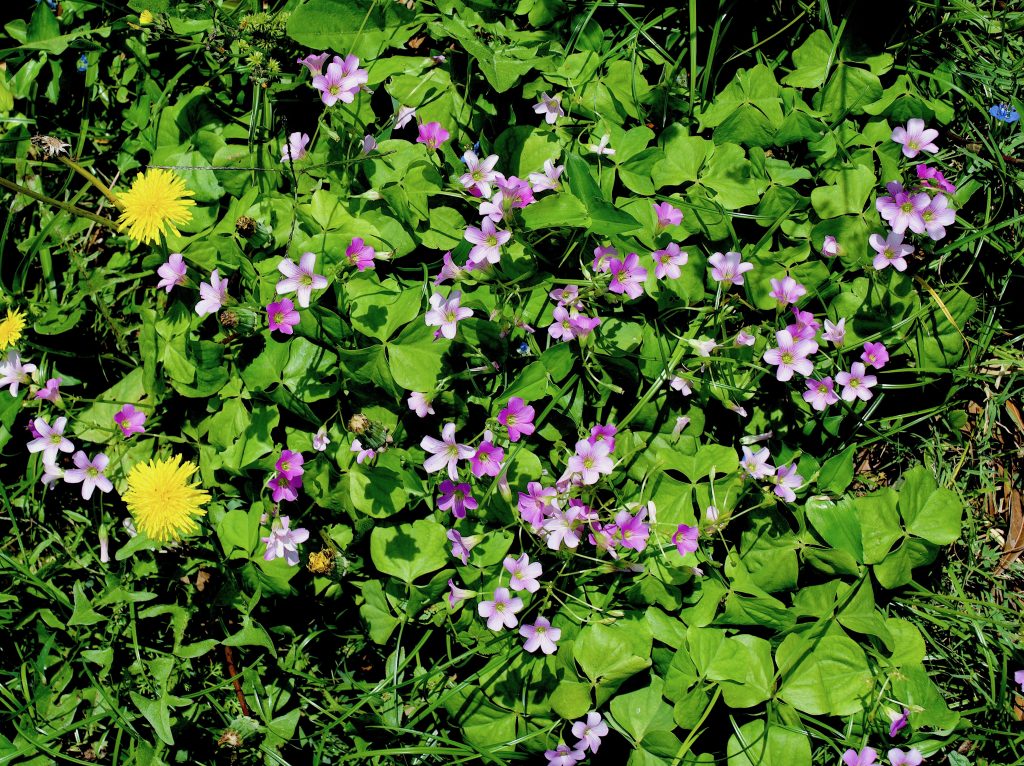
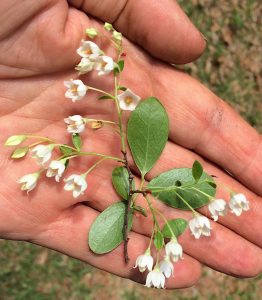
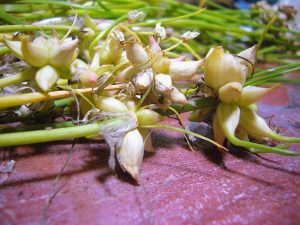
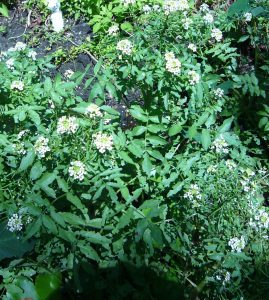
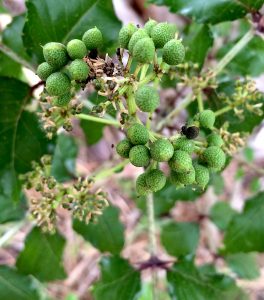
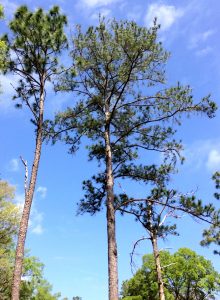



 Donations to upgrade EatTheWeeds.com and fund a book are going well and has made the half way mark. Thank you to all who have contributed to either via the Go Fund Me
Donations to upgrade EatTheWeeds.com and fund a book are going well and has made the half way mark. Thank you to all who have contributed to either via the Go Fund Me
